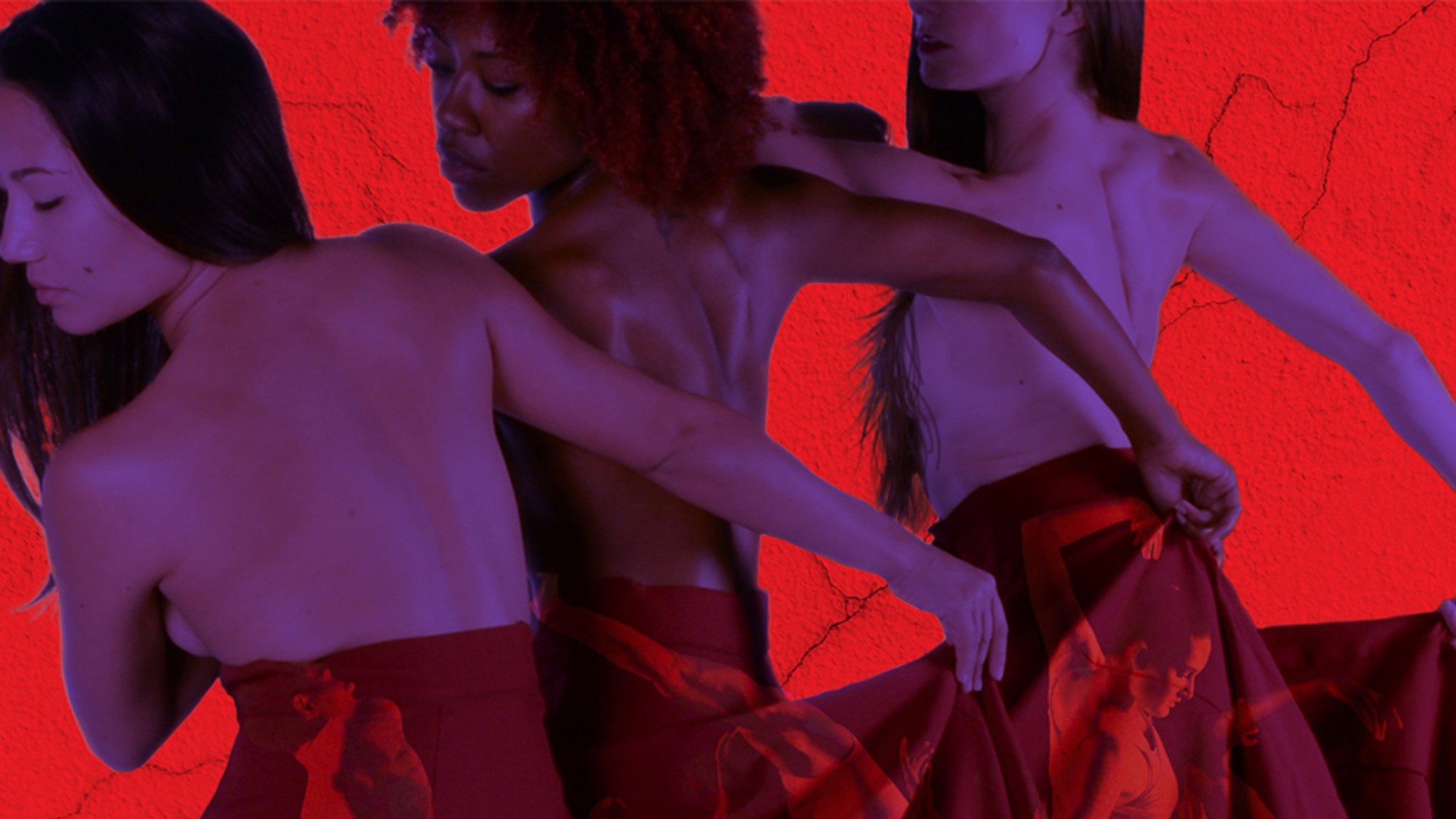
Review: Dance Now Miami Performs “Bridges Not Walls”
May 21, 2019 in Culture, Dance
From the title one surmises the latest work by Dance Now Miami, “Bridges Not Walls,” is founded on an attempt to offer an alternative to protest and resistance. Resistance is a term often bandied about in contemporary cultural contexts since 2016, particularly among contemporary artists. To see an overtly provocative piece created as work of contemporary dance is in itself relatively unique within the context of cultural output in today’s world. One usually associates protests, marches and resistance as a concept to mass movements like the American Civil Rights period of the early 1960s and the reaction to the Vietnam War during the late 1960s and early 1970s.
In 2019, the cultural producers appear to be at a loss as to how to eloquently articulate a response to the social and governmental turmoil induced by the 2016 Presidential election. In fact, it would be a mistake to locate the origin point of America’s turmoil in that election. It would be far more accurate to consider 2008 or even 1980 as the foundation of the fury facing the United States today.
If you read carefully my two paragraphs above you will notice I have refrained from utilizing the term “political,” though his over-used and under-understood word resonates in a particularly profound manner considering “Bridges Not Walls.” If by “political” we understand the origin of the Greek word and its relationship to those living in a political body, usually in a city, then we must understand the awkward and sometimes conflicting relationship between art and politics.
If art is concerned with revealing truths and providing beauty (however one may describe these words) then we must understand that art and politics are often at odds with each other. This is sometimes the case with the latest work by Dance Now Miami. The group’s recent performance at the Broward Center for the Performing Arts was held at the lovely Amaturo Theater, an intimate space well-suited to the intricacies and intangibles of “Bridges Not Walls.”
The evening began with The Shifting Weight of Water making its world premiere. Choreographed by co-Artistic Director Diego Salterini, Jenny Hegarty Freeman and Ally Ginns-Ayers were standouts in this elegantly visceral composition.
The second performance called Fire Within, Fire Without: Dido on the Pyre brought forth a uniquely sensual display of emotions. The work was choreographed by co-Artistic Director Hannah Baumgarten and displayed a resounding connectivity to the deepest passions one may not always have permission to enlist during quotidian meditations. It was an exceptional experience.
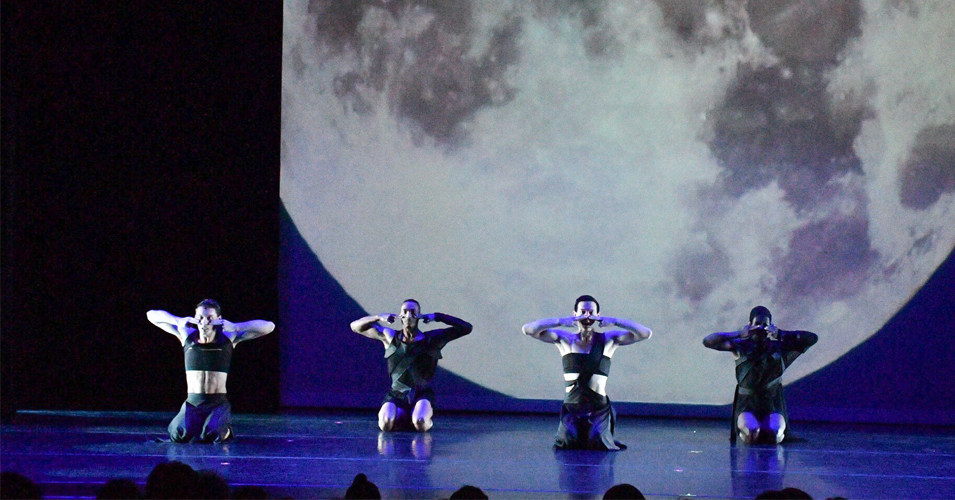
An ensemble piece blending anguish with hope, Bridges Not Walls exists as a response, a cry and perhaps even an expression of joy in the midst of an era when the United States government imprisons innocent children, women and men whose only crime is the request for political asylum as they flee murderous thugs in both their government and city streets. What is transpiring now across the United States is nothing less than a series of crimes against humanity where children are put in cages, abused sexually in many cases and torn apart from their parents in a transparent attempt to coerce and terrorize those fleeing Guatemala, Honduras, Mexico and other parts of Hispanic America in search of a life of peace and reliable work for their families.
That Dance Now Miami attempts to address this ongoing American shame is in itself laudable, if not downright heroic. Whether or not its works achieve any real political education or policy change is another question and may be beside the point. The work itself fuses a multiplicity of energies and succeeds in conjurings of major and minor emotions both, thanks to subtle gestures that bespeak madness, a physical and emotional wreckage in our insane times. It is a form of bravery for an artist to even venture into this murky and dark territory so filled with evil and pathos.
While at times it is at best naive and at worst, philosophically and politically negligent to think that adding political meaning to works of dance or art will solve the problems such works aim to bring to light one can never speak for each viewer. Could there have been a young member of the audience inspired enough to run for office or become a social justice attorney?
There are many reasons why art in politics can come across as naive and overly didactic, if not downright self-indulgent but perhaps the most obvious and least understood is the simple fact that the audience of art is usually, already, politically in the same camp or tribe as the artist or artists (in the case of Dance Now Miami) who creates the s0-called “political artwork.” This is a long debate and it applies to painting and sculpture as much as it applies to dance, film or writing. There is a chasm of meaning and an avalanche of separation between the way power functions at the governmental and societal level and what art achieves at its greatest moments: the seduction and illumination of greatness in thought and in spiritual awareness.
This is not to say that art has no ability to engage humanitarian or political causes and crises. One need only examine Picasso’s Guernica or listen to Bruce Springsteen’s The Rising to explore two successful responses to human tragedies that arose from violent conflict.
While I hesitate to label their work “political” though the choreographers themselves may have explicitly intended to make work that addresses topical themes, I do believe the beauty of the Dance Now works likes in the dignified way the expressions of anguish and joy are fused to become a pure form of movement. In the case of Dance Now Miami, their evening was at once a display of willful visceral beauty whose every movement may have felt like an expression of rage as much as an utterance of hope. In this way we owe a debt of gratitude to the dancers, the choreographers and all who helped bring this powerful event into fruition.
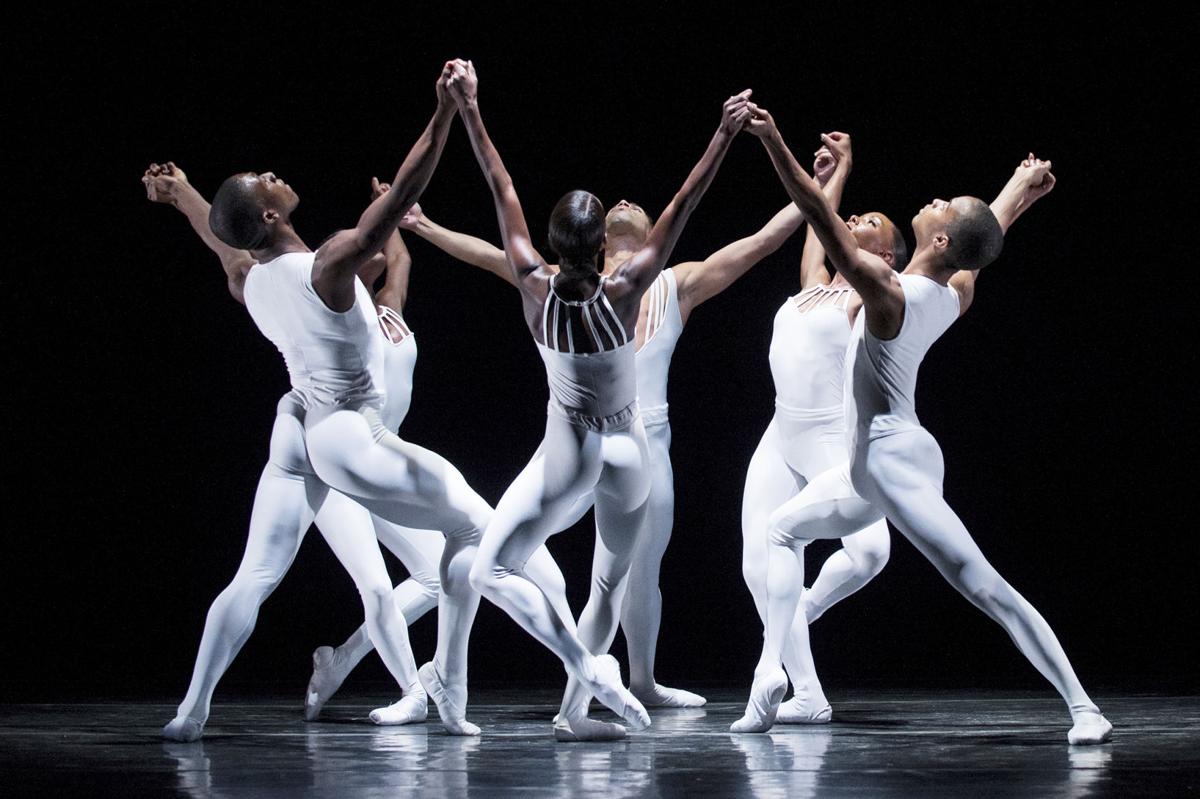
Review: Dance Theater of Harlem
The Dance Theater of Harlem recently created a visceral and exquisite night of short dance pieces that spanned the genres of classical ballet and contemporary performance effortlessly. Founded in 1969 under the co-directorship of Arthur Mitchell (the first African American principal ballet dancer) and Karel Shook, The Dance Theater of Harlem has a reputation for innovation that does not fully leave behind the traditions of classical ballet. This tradition is well deserved and on the night of the performances I viewed, I could see why.
Opening with Valse Fantaisie by George Balanchine and concluding with a piece called “Mother Popcorn”, this company is a feast for the eyes. Let’s begin with their costumes. Elegant and sexy without being to obviously daring, they illustrate perfectly the emphasis placed on the dancer’s body. With a delicate series of cast lightings and numerous sharp shadows throughout the night, the bodies in various skin tones against the harsh white light represented a dazzling counterpoint to the usual homogeneity of contemporary dance.
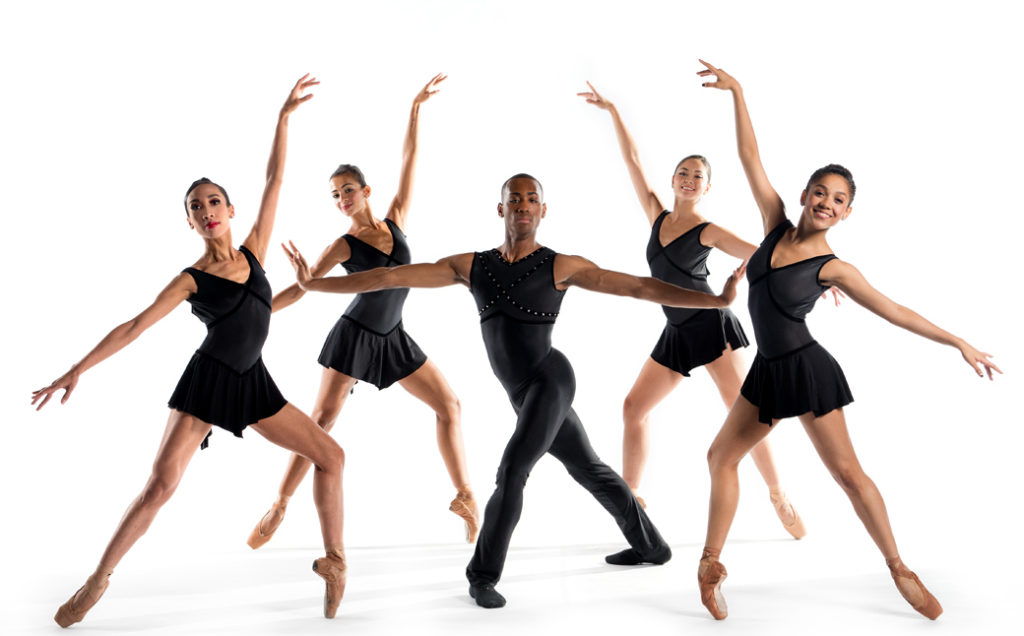
Courtesy of The Dance Theater of Harlem
That the dancers were more than able, and in the case of Da’Von Doane and Yinet Fernandez, simply divine, only adds to the versatile nature of Dance Theater of Harlem’s congenial expressions of grace and power.
One particular highlight of the night was Dancing on the Porch of Heaven from 1993. Choreographed by Ulysses Dove and accompanied by haunting music composed by Arvo Part this piece was a sophisticated and complex display of a multitude of emotions. Bodies were flying and hearts were pounding. It reminded me of controlled, yet graceful ebullient chaos, the kind you experience in the throes of a healthy love, one you know and believe will endure forever.
To say it was a showstopper may not be overstatement. This was an elegant display of virtuosity, ensemble dancing and provocative power. The tension between the male and female performers was palpable and moving, at once a seduction and a repulsive display of love’s vicissitudes. This was modern dance at its finest with just the right remnants of traditional ballet to maintain a sense of discipline and restrained joy. It brought the house down, which by the way, consisted of at least a majority of people of African and Hispanic descent. To see this multicultural audience was a breath of fresh air and provides hope that both traditional ballet and contemporary dance can cross cultural and class lines to attract larger audiences in the future.
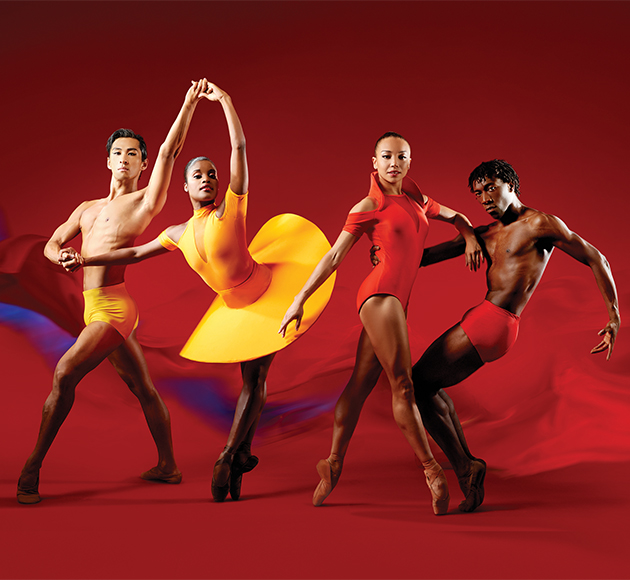
Courtesy of The Dance Theater of Harlem
This was a fabulous night of dance across the board and one must contemplate the importance of the Dance Theater of Harlem within the American cultural consciousness. For this group is more than a company. They are exemplars of New York City’s brilliant and enriching cosmopolitanism, a cosmopolitanism and creativity under fire in our tenuous and divisive political era.
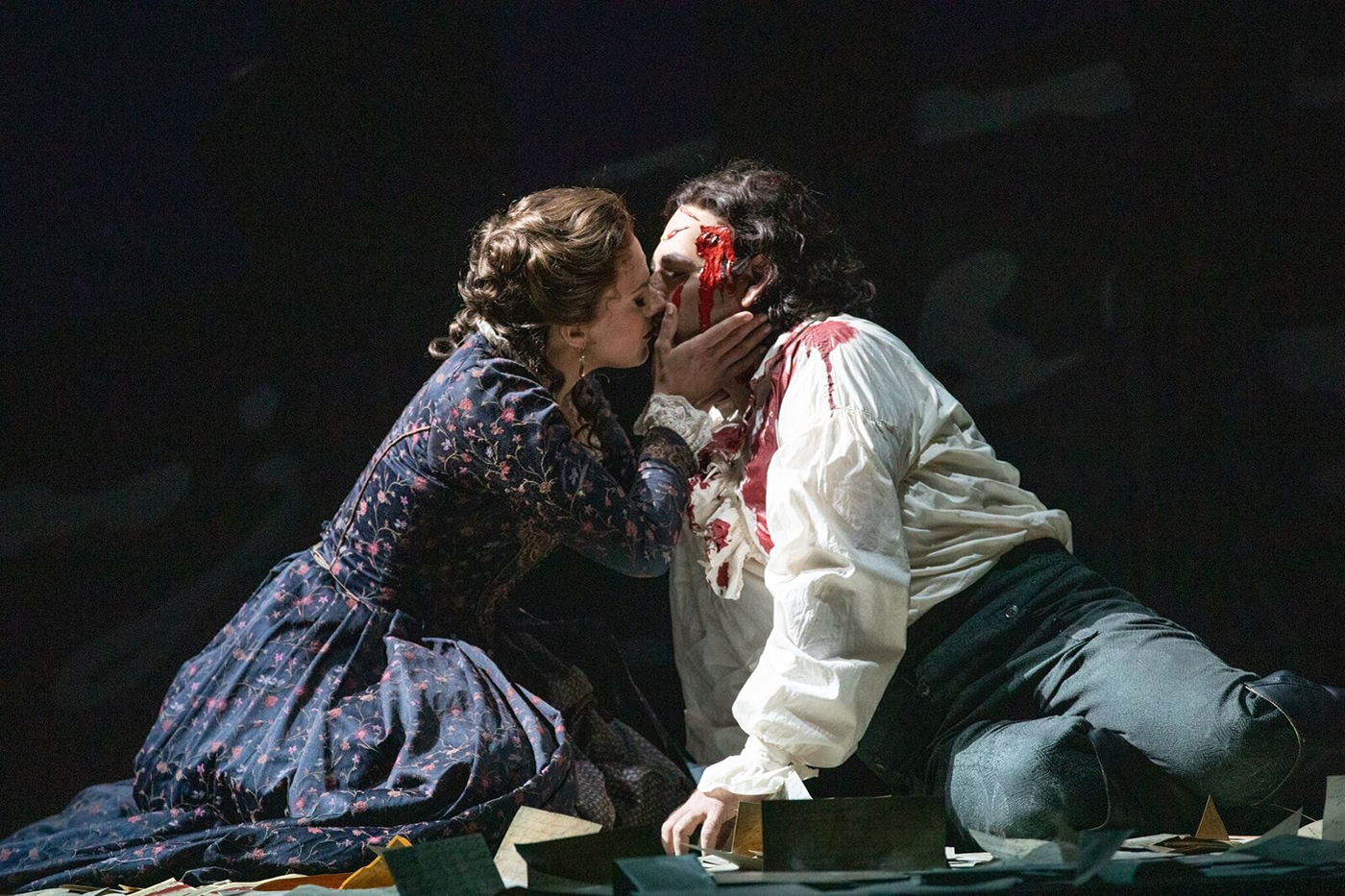
Review: Werther by the Florida Grand Opera in Miami
April 30, 2019 in Culture, Opera
The Florida Grand Opera (FGO)’s production of Werther at the Arsht Center in Miami displayed a touching level of humanity and an ethereal commitment to desire and to a musical form that pays tribute to the stakes of unrequited love. From the outset of the four-act opera with a libretto written by Jules Massenet, the audience is treated with a production that displays a rare level of romantic melancholy with just a hit of comic farce to make this minimalist drama one to cherish. The FGO’s stylishly pastel-like lighting and minimalist set design makes this production a very contemporary one, complete with the requisite amount of moody and breezy stage effects.
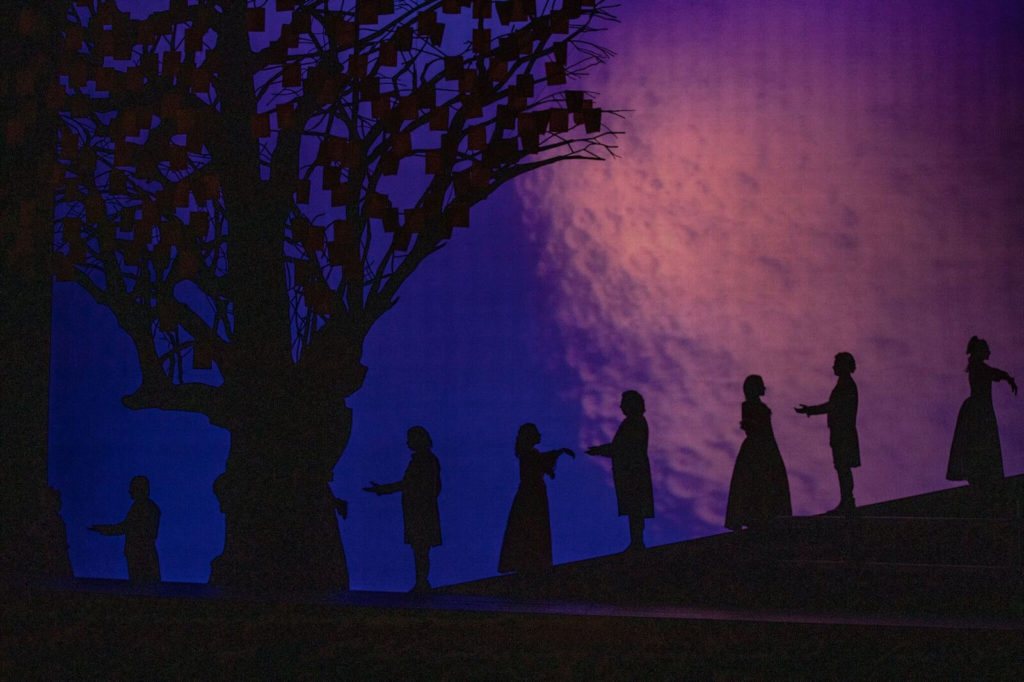
Photo Courtesy of Florida Grand Opera, 2019
The aria by Dimitri Pttas was a special highlight of the night. It happened so quickly, just after the curtain rose, that it could easily have been missed. I was taken aback by its beauty and its force. Mr. Pittas was here making his Florida Grand Opera debut and I must say what a debut it was. It left more than this audience member contemplating the joy of a live performance. Forget opera standards, this was a spectacle to cherish forever.
Evan Kardon played Sophie with just the right mixture of innocence and subtle seduction. Indeed, I believe Werther was not the only one falling in love with her on this night…
George Hartmann, Edouard Blau and Paul Milliet wrote the libretto to this intriguing story that first premiered in 1892 in Vienna. Since those days Werther has been considered a bit of a lost gem, not often produced and rarely listened to. It’s a work that’s lost a bit of standing within the classical musical world, perhaps unfairly.
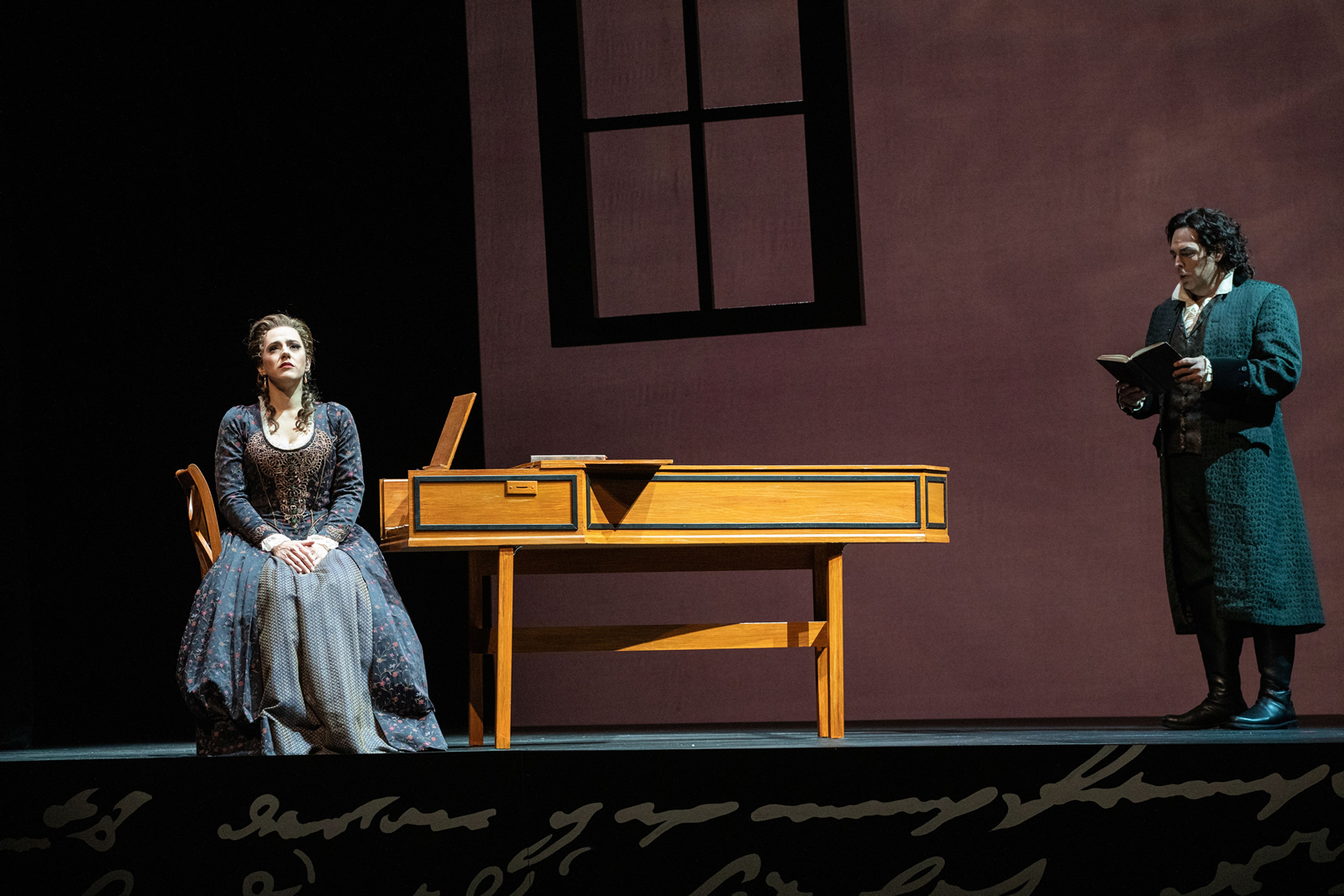
Photo Courtesy of Florida Grand Opera, 2019
With regards to the FGO’s production, Werther remains an interesting study in unrequited love, longing and the complexities of love triangles as a geometric conundrum that can only be explicated and resolved through tragedy. The bloody kiss at the performance’s conclusion is a powerful site. It is a moment where love becomes immortal and conquers even death.
What the Florida Grand Opera has achieved with this production of Massenet’s gem beckons many questions and provides inspirations for opera lovers. To inter-twine this old tale into a contemporary sensibility with such intricate lighting and a loving interpretation of the musical compositions represents an achievement of the most ambitious degree.
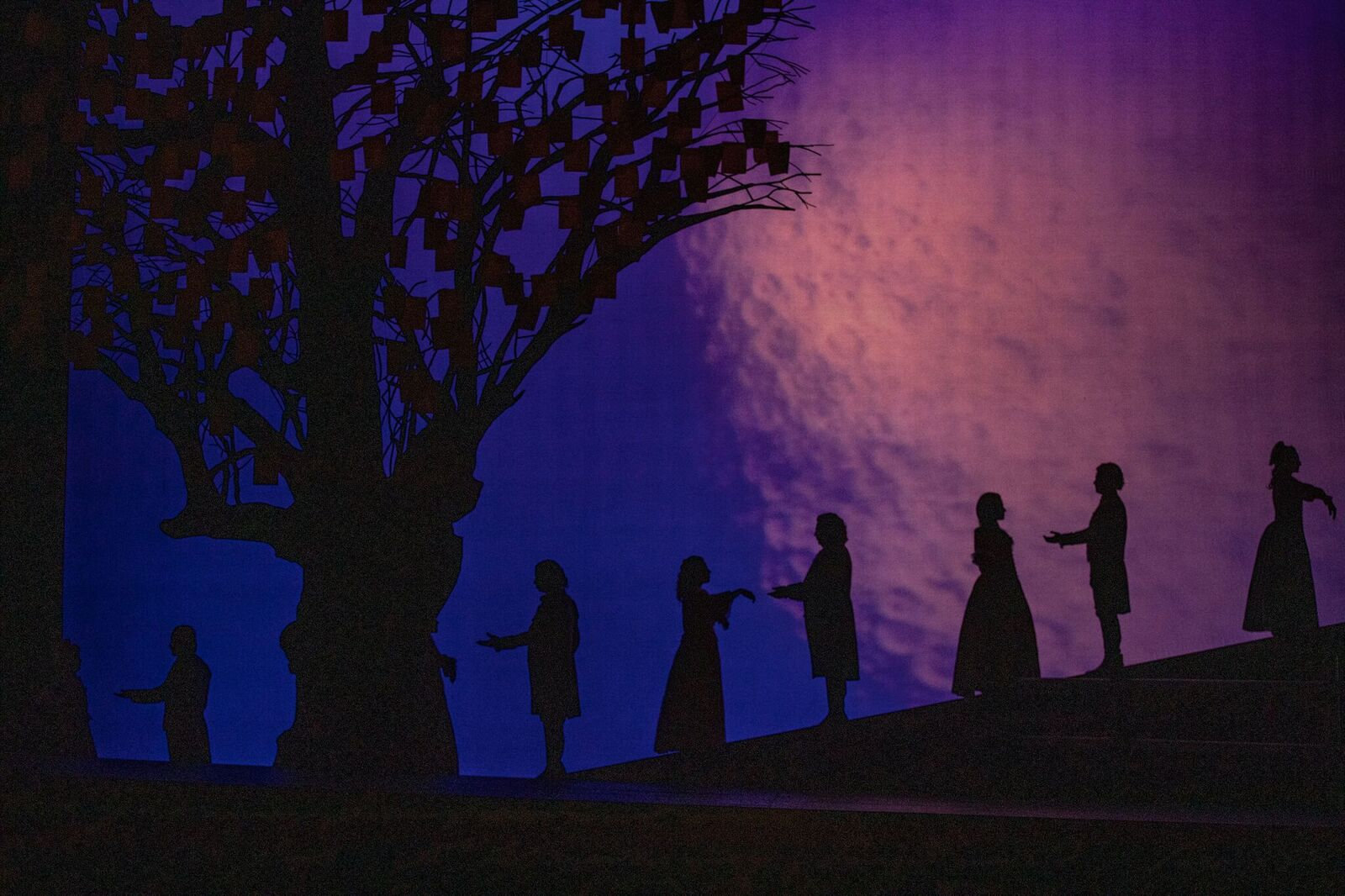
Photo Courtesy of Florida Grand Opera, 2019
The Miami opening night performance I witnessed produced a restrained and fulfilling sense of longing. It was an interesting phenomenon to find longing so fulfilling, at least as a form of drama. Between the oddly inclined stage and the various depths of fields to go along with the shimmery lighting, the performance often felt like a somewhat soporific yet compelling dream one has after attending someone else’s wedding while still unmarried, pleased to be unmarried yet also somewhat curious about all the fuss being made over connubial bliss.
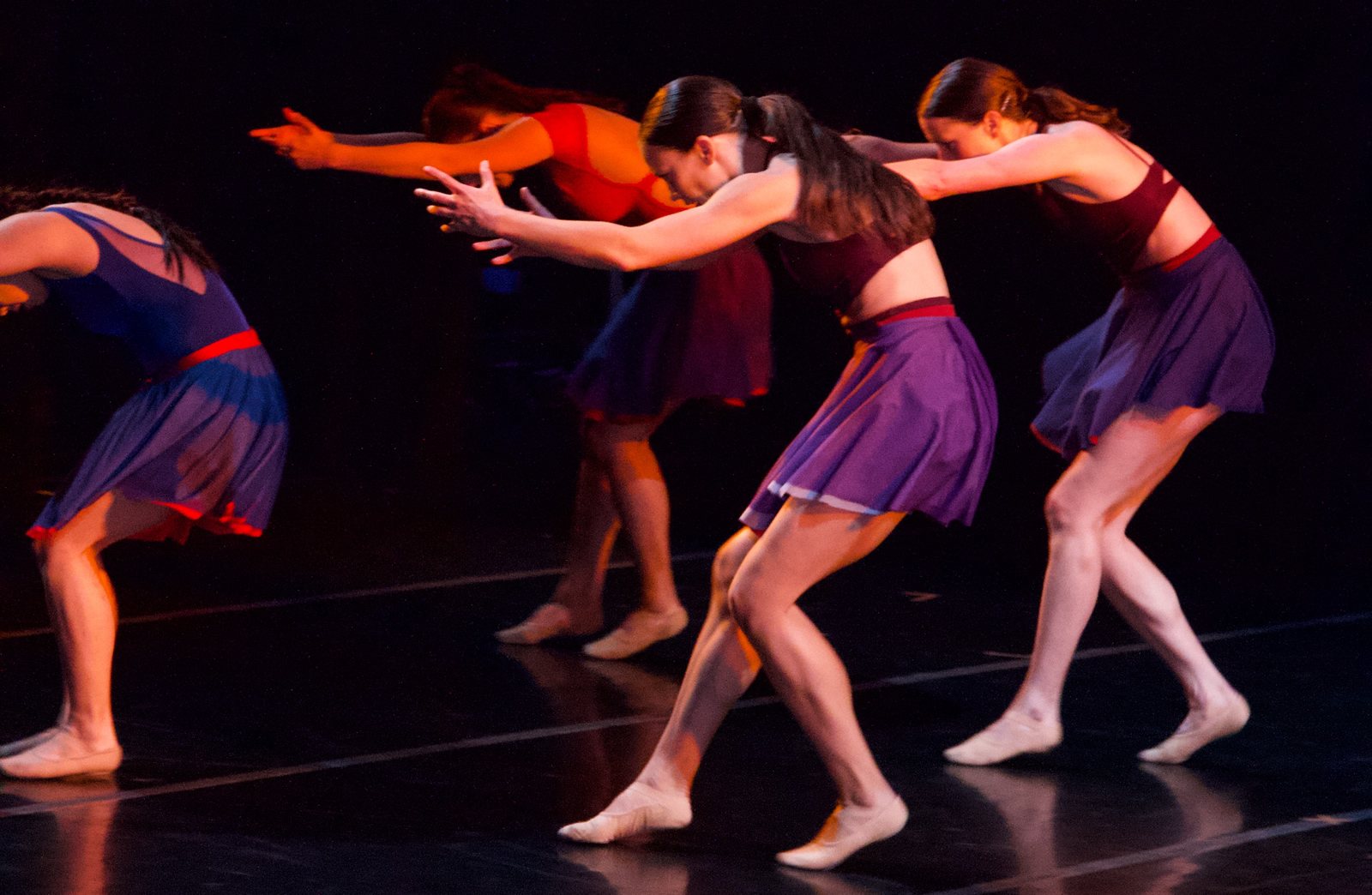
Review: Pulse by Ballet Florida at the Kravis Center for the Performing Arts
in Ballet, Culture, Dance, Reviews
It can sometimes be a stretch to call certain dance performances “ballet.” In the case of Ballet Florida recent program of works called “Pulse” performed at the Kravis Center in West Palm Beach, the confines of genre were pressure tested, expanded, and even contravened in a thoroughly sensational display of physical artistry.
Fusing fragments of romantic longing with theatrical displays of contemporary experimental dance, Ballet Florida is a smaller company known within the South Florida cultural community as a transcendental labor of dance love. Its commitment to new choreographic pieces and contemporary music is no secret and the company deserves great praise and committed ardor for its bravery and willingness to challenge many dance conventions.
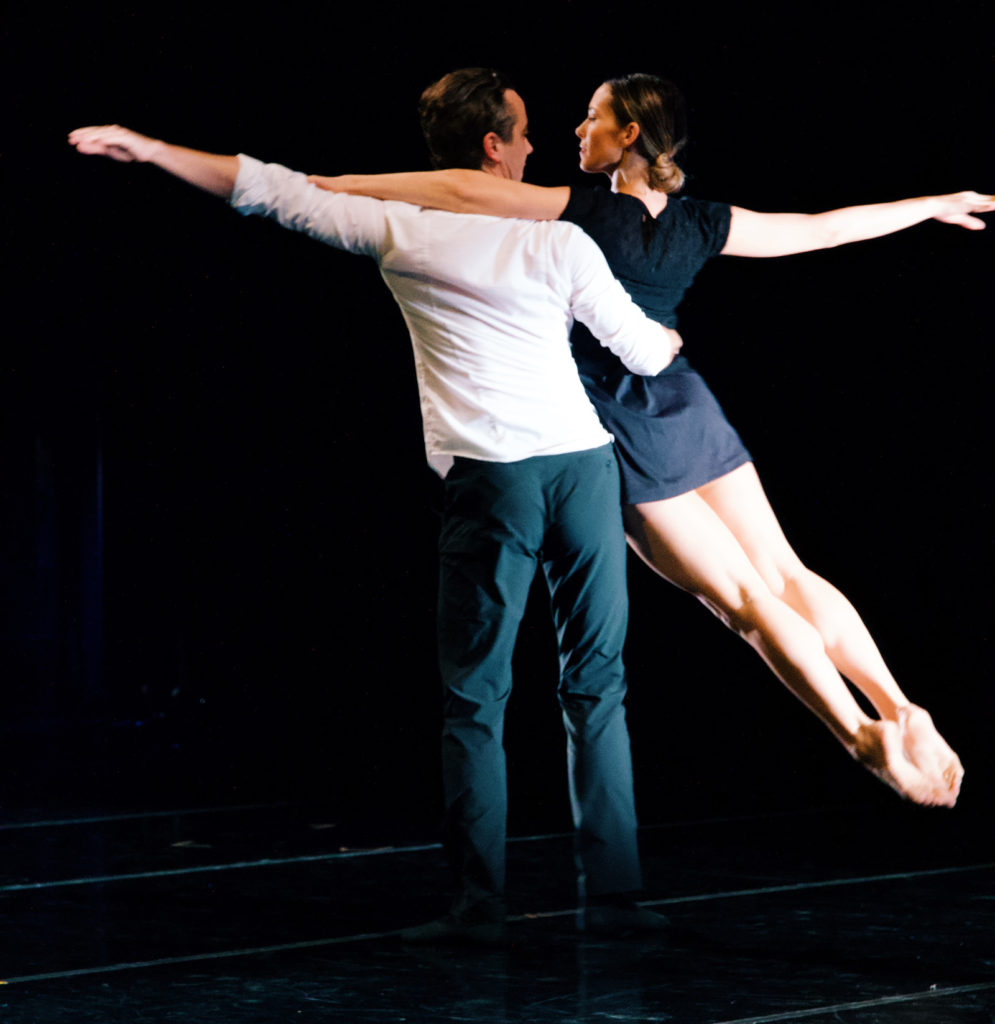
Ballet Florida, Ritual, 2019
The emotional centerpiece of the evening’s performance was “Ritual,” a work choreographed by Guy Beaumont Palmer and performed by him and Lauren Carey. The duo made for an exquisitely transcendent vision of pain, joy, longing and release. More than a dance, Ritual was an expression of the very nuanced ways our emotions can go from loathing and desire to love and completion and back and beyond in an ardent love quicker than the batting of an eyelash or the pulsing of a heartbeat.
To this end the Pulse program continued the company’s tradition of inviting guest choreographers to create and collaborate with Ballet Florida’s dancers. The results are often genre-defying and that is not necessarily a bad thing. Today, the name and the word “ballet” implies many things, sort of like the term “abstract painting” if you will. The idea behind ballet in a contemporary context is to challenge traditional movements and bodies, sets and expectations. In the process we get to see ballerinas of different heights, weights and shapes in a more democratic and enlightened approach to what defines the perfect dance body. Dance is not just about moving the feet and the hands. Dance is more than just lanky legs and implied eroticism in today’s world. Thankfully, Ballet Florida understands this as well as any other dance company in the country and their bold pieces blend the intimacy of classical works like Balanchine’s Swan Lake with the visceral physicality of more contemporary figures such as Jerome Robbins and Michael Clark.
Playing in the more intimate Persson Hall in West Palm Beach’s Kravis Center, Ballet Florida’s troupe of dancers produced an exacting and steamy series of works that enraptured the bulk of the sold-out house. With an elegant blend of quiet, subdued pieces for two or four dancers combined with larger ensemble works, the evening was highlighted by a sexy and fun concluding number, appropriately called “Finale” and choreographed by the whole company. The work saw the dancers wear loose-fitting black suits with white dress shirts in a strangely compelling and semi-homoerotic scene that bordered on camp but dare not enter into its terrain. With the women dressed in the same costumes as the male dancers, the effect was gender-erasing and yet pleasingly alluring. In a strange way, the female dancers seemed distilled to their more feminine essences with the over-sized suits acting as a kind of loose-fitting veil and their bodily movements along with leeringly seductive expressions creating a rich sense of heightened sexual play. This was a piece that employed seduction as its foundational material and concept and it worked beautifully.
A particularly powerful aspect of the pieces of the evening was the curating of contemporary musical pieces that ranged from atmospheric and dreamy to trip hop-like beats and subtle Miami chill wave.
Overall The Ballet Florida’s program highlighted the more expanded notion of what dance can be and made for an especially emotional and provocative visual experience pushing the expectations and emotions of its audience.
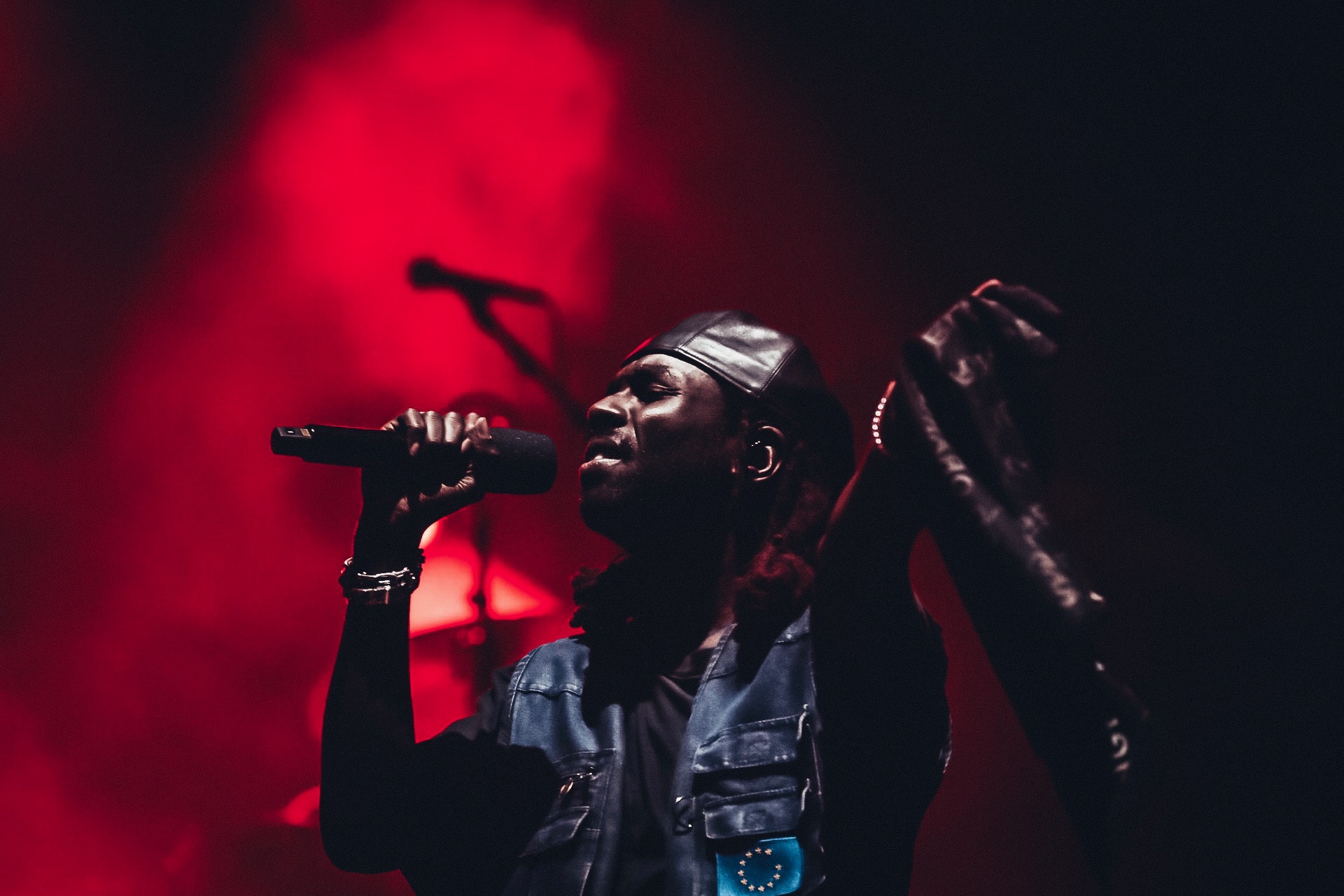
Review: III Points 2019 in Miami, a Trip Across Musical Genres
in Art, Culture, Music, Reviews
The 2019 version of the annual III Points Festival in Miami was a fascinating look into the multifaceted contemporary music scene that included a look into visual art and of course, fashion. Music festivals have become a cultural norm. Think Coachella, Glastonbury, Bonaroo or Lollapalooza, the original festival remake that took its inspiration from the pop and rock festivals of the late sixties (Woodstock and Monterey, for example), which took its inspiration from Folk festivals in the earlier part of the decade (think Newport and Bob Dylan). It suffices to say that music festivals have a long and illustrious history in both the musical and mainstream cultural universe of the United States and even Europe.
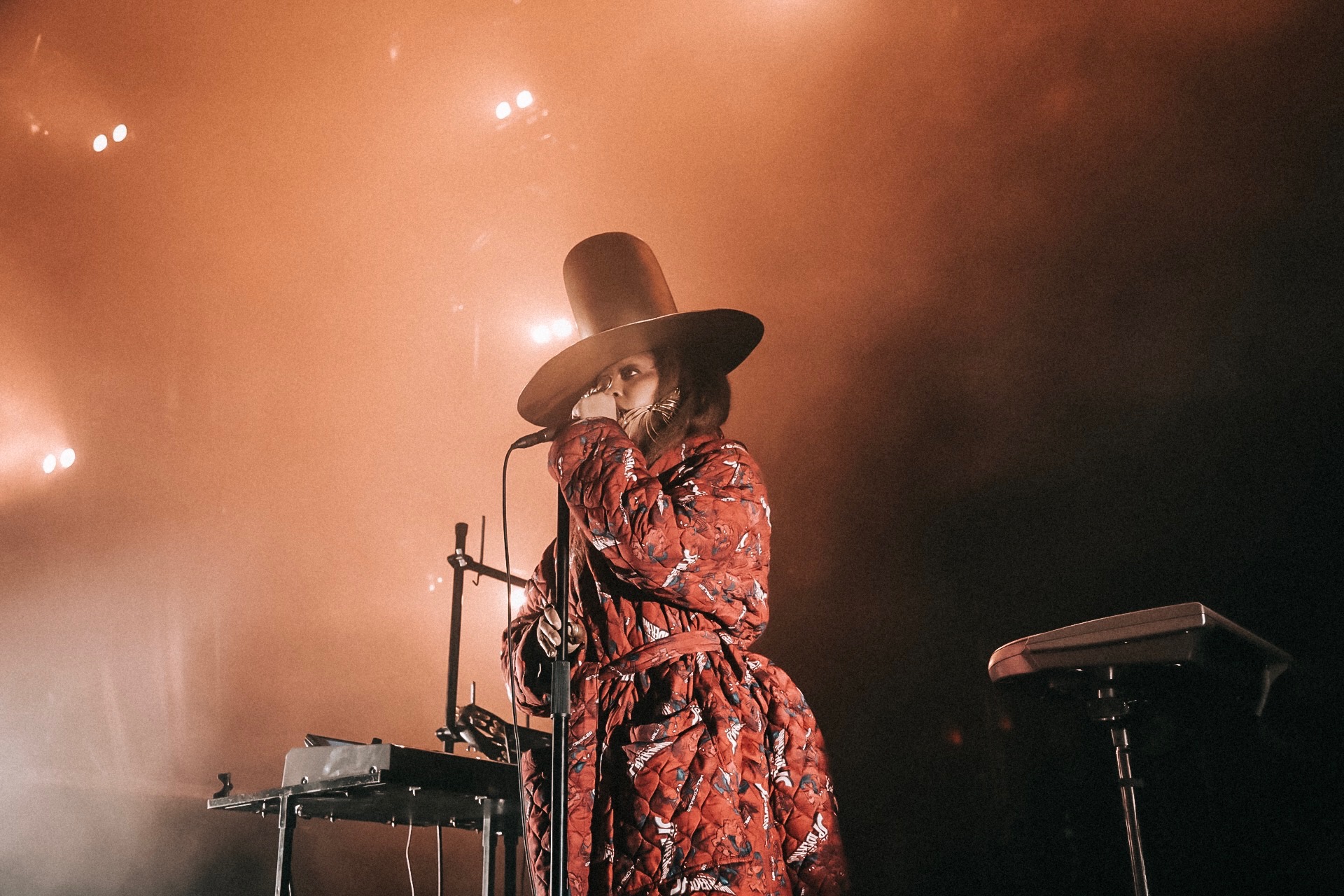
Erykah Badu, Courtesy of III Points 2019
What makes III Points in Miami such a unique phenomenon is its commitment to presenting serious musicians and bands for serious music lovers. When your lineup couples Godspeed You! Black Emperor with Blood Orange, you have the very definition of eclecticism. III Points takes place in the Wynwood District of Miami, a unique blend of so-called art galleries (usually the work of graffiti artists and trust fund kids), contemporary restaurants and the requisite glitzy Miami night clubs. Choosing Wynwood as a locale for a music festival would not necessarily conjure images of an electric experience. Thankfully, III Points transcended the limitations of the quasi-industrial neighborhood with a unique combination of stagecraft and rooms designed to provide complete experiences for just about all your senses.

A$AP Rocky, Courtesy of III Points 2019
Let’s start with the unique approach to stage names: Mind Melt, Main Frame, Isotropic, Sector 3, and The Boiler Room, to name a few. Throw in cool concepts like the psychedelic skate room or the immersive installations like Aether and the ICA partnership with Judy Chicago. Ultimately however, people do not go to music festivals to see art or go roller skating. They go to see and hear great music. III Points 2019 did not disappoint. There are simply too many sonic highlights to list in one review, but notable moments include the powerfully, soulfully sweet set by Blood Orange and the uniquely atmospherics of Tim Hecker.

Herbie Hancock, Courtesy of III Points 2019
A$AP Rocky drew enthusiastic raves from the festival-goers as did the likes of Raekwon and Loka. Now about those festival-goers at III points… Wow! Let’s begin with the fashions. The girls pretty much dressed in a combination of either sexy Goth teenager or Dracula’s stripper girlfriend… The range of styles and attitudes in between was kind of limitless. As for the boys… let’s just say that they did not put in the same efforts. At some point, American young men need a boot camp for fashion. First rule in said bootcamp: no baseball caps! Second rule: No tennis shoes, sneakers, or vans…. I could go on and on. The fashion horrors and crimes against humanity ran rampant at III Points, like they do at other music festivals but in a strange way, they were indicative of the unique lineup and spirit of this event that is designed to appeal to ardent sonic devotees, be they hip-hop lovers or Eryka Badu or 30-something snobby aesthete disciples of Godspeed.
This is an event to be experienced, to savor and to engage in for those who actually love complete albums and know the difference between a 12-inch and a 7-inch…
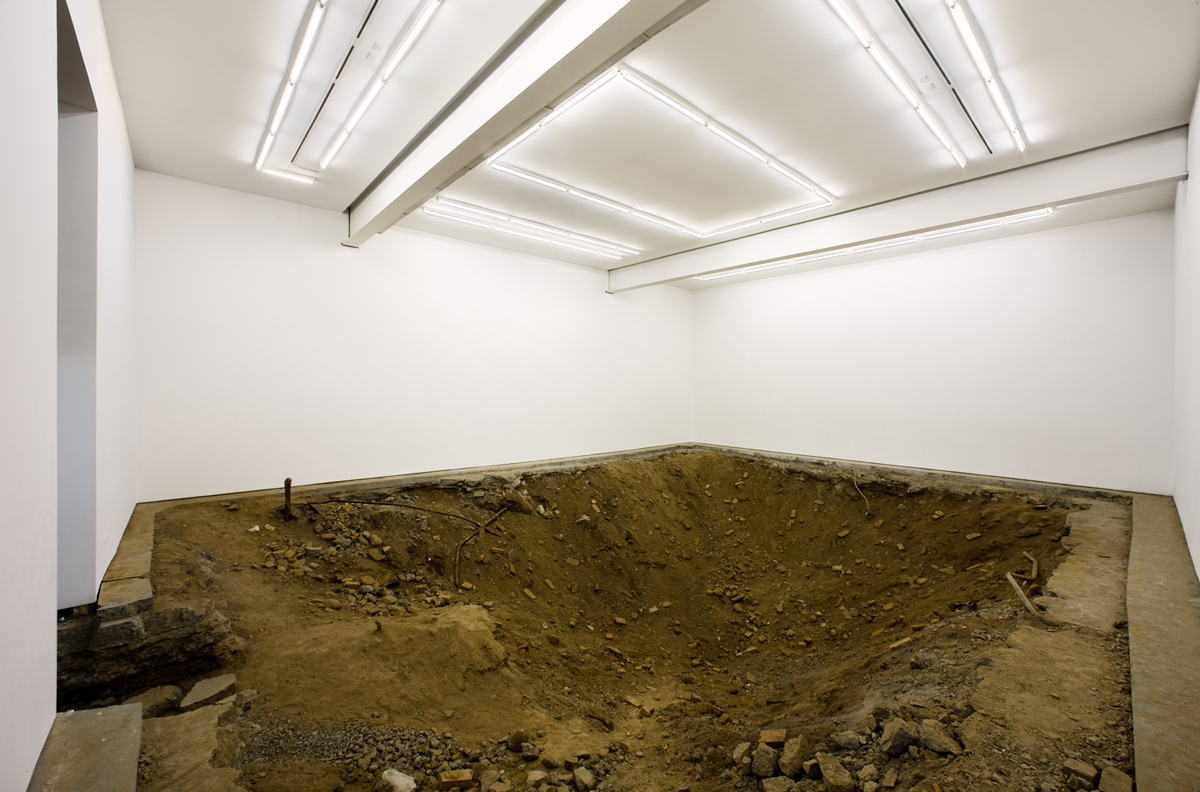
Gavin Brown’s Bold Enterprise: Re-Thinking the Contemporary
in Art, Art Galleries, Featured Articles
Above: “You” by Urs Fischer, 2007, Courtesy of Gavin Brown’s Enterprise
Gavin Brown’s Enterprise isn’t just a contemporary art gallery in New York with an unusual name. It’s also a phenomenon, a state of being, and a destination where more than “just art” happens. Long established as one of the more original spaces for contemporary art exhibitions, the gallery serves as much as a locus for unique events and performances as it does for the sale of works of painting, sculpture and other objects.
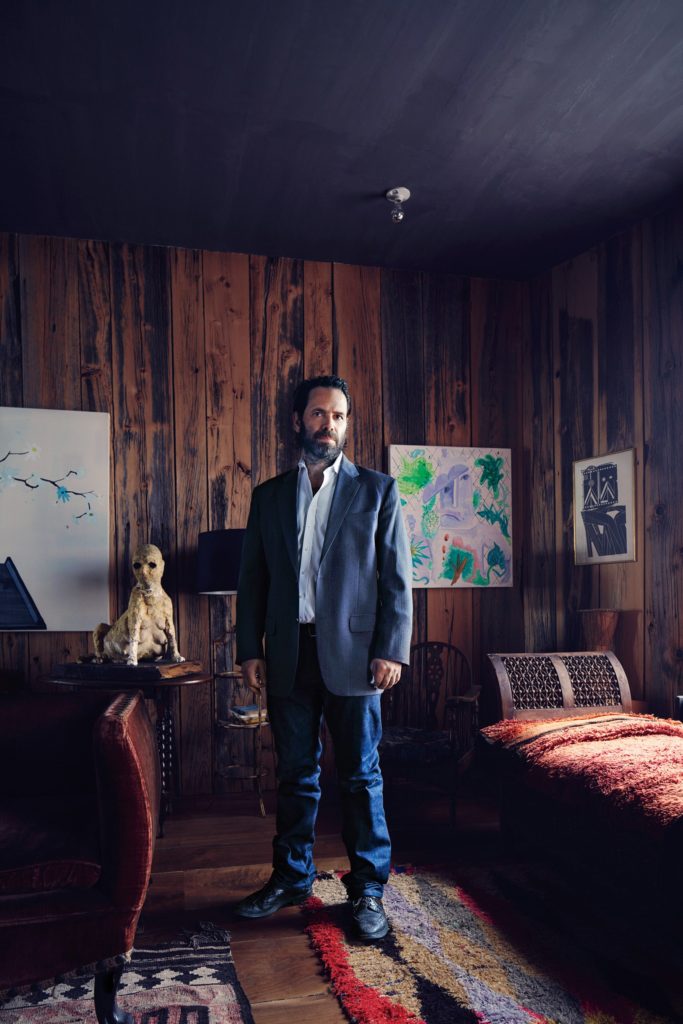
Gavin Brown
A Uniquely New York Origin Story
Gavin Brown is distinctive within the world of art dealers. His destiny lies in a fine understanding of what makes for deceptively compelling and clean work. His first “real exhibition” consisted of small paintings by Elizabeth Peyton that were displayed in the Chelsea Hotel. Mr. Brown, at the time, an unknown and without a proper gallery space of his own, decided to try an unconventional format and venue to sell work by the young Ms. Peyton– an artist known for her graphically-explosive renderings of her friends, musicians and various celebrities.
Visitors to the show were required to fetch a room key at the hotel’s front desk. From there, they proceeded to the exhibition space. One of the rooms in the infamous hotel made famous by the likes of Janis Joplin and Leonard Cohen. The result: The exhibition sold out and solidified Mr. Gavin’s place in New York’s contemporary art mythos.

Ella Kruglyanskaya, Doll on Lilac Background, Oil on linen (2018)
A New Vision in New York’s Gallery Circuit
Though first established in 1994 in New York City’s SOHO neighborhood by Gavin Brown, the gallery finds itself situated today in Harlem, after a brief stopover in the West Village. From its inception, Gavin Brown’s Enterprise has been (in)famous for its exhibitions that push boundaries, create craters in the gallery floor (by Urs Fischer), and tantalize art-goers and New York’s perpetually-jaded set with fresh approaches to contemporary creativity that never seem too contrived or staged.
This is a rare feat in a world where every gesture is viewed with cynical precision, and the skepticism of those who have grown imperviously numb to enchantment, stimulation and humor.
Art By Other Means
If contemporary art is a plaything for the wealthy, then art gallery dealers are purveyors of rattles, stuffed animals, and other objects that pretend to stimulate and feed on the fantasy of its users. Playthings are not necessarily bad things. They need not be callow or shallow, vapid or inane. Indeed, art has always been about play, ever since Marcel Duchamp and Jean Arp stuck a finer in the eye of the European Bourgeoisie in the shadow of World War I.
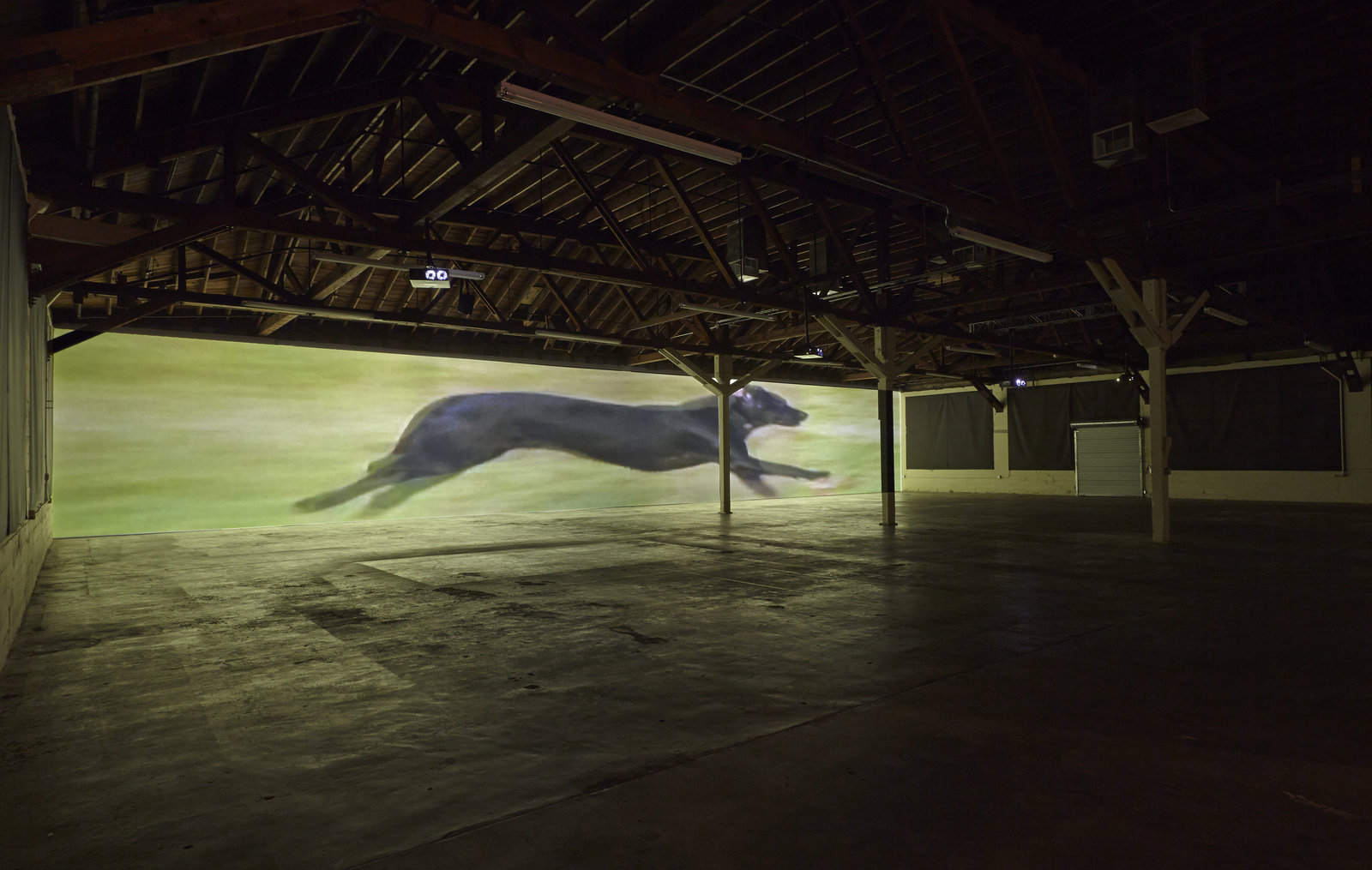
Sturtevant, Finite Infinite (installation view at 356 Mission Road, LA, 2013), Video installation, dimensions variable (2010)
Since then, art can be anything an artist desires: philosophy by other means, or politics as a grandstand. It can be innocuous in its seduction or gritty in its debasement. The purpose of art is almost beside the point, really, and Mr. Brown’s gallery understands this with a feverish relish that borders on the mad squabbles of a street fighter who has just been kicked out of medical school.
Gavin Brown’s Ambition
What separates Gavin Brown’s Enterprise from other New York City art stalwarts is its founder’s vision that sees the contemporary gallery as a forum for an exchange and questioning of what may be considered “art,” in an era when most all acts of creative expression become commodity and get collected by the world’s economic elite. In a recent interview with Art News, Mr. Brown expounds on this concept:
The word ‘gallery’ is no longer elastic enough to describe all the versions and species that we currently regard as galleries. There are vastly different models, vastly different scales of economy, different ideologies which all produce different ideas of what art even is. What art is for. What galleries are for. But my instinct is that the entire endeavor—across the board—and however it manifests itself is more vital and needed than ever.
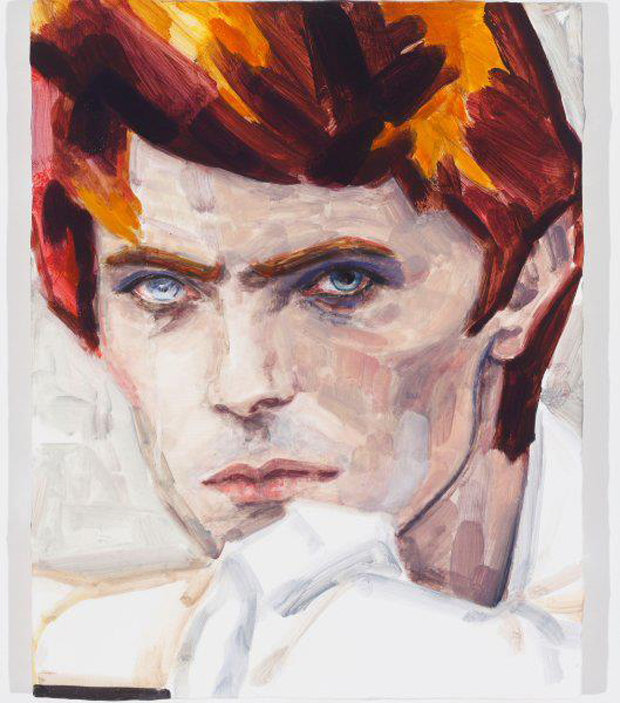
Davidy Bowie, a 2012 painting by Elizabeth Peyton
An Intricate Roster of Artists Marking New Territories
With a distinguished roster of artists that includes Joan Jonas, Alex Katz, Danny Lyon, Rob Pruitt, Sturtevant, Ella Kruglyanskaya, and Franz Ackermann, it is no wonder that Gavin Brown’s Enterprise is considered one of the most confusing, unpredictable and challenging galleries in the contemporary art scene– not only in New York City, but in the United States. Mr. Brown’s challenge is one of contemplation, one that refuses to let his gallery arrive at an easily discernible brand. What makes Gavin Brown’s Enterprise a bold and brave foray is its utter rejection of many of the formalities and customs of the contemporary art business.
More Than Just a Space for Art
The gallery’s parties and dinners are legendary for their intimacy and adventurism. Gavin Brown’s Enterprise has successfully transcended the line between contemporary art space and art world. It’s relationship to the community of artists in New York City (and elsewhere) is enhanced greatly by its staging of events inside and outside its four walls that go beyond the selling of artworks. These events include happenings, musical performances, parties, and just about any other social interaction that blends the privileged insiders of New York’s collecting circuits with the fringe-lifestyle of artists and thinkers in Manhattan, Brooklyn, Queens and the Bronx.
Global Presence
With this commanding presence in the New York art scene, Gavin Brown’s Enterprise has launched a global initiative with a commanding position in the world-wide push of Art Fairs. Indeed, the gallery’s routine presence at Art | Basel, Art Basel Miami Beach, and Art Basel Hong Kong have positioned as a major powerhouse in the contemporary art sphere of influence that includes major auction houses, top museums, and a variety of curators.
An Inventiveness Born of Eclecticism
The gallery’s shows embrace the unpredictable and the difficult. In our current era of predictably luxurious art markets and artists who cater to them (however veiled their intentions may be) Gavin Brown’s Enterprise represents a contemporary art utterance whose spirit of inventiveness, openness, and irrepressibility represents a seduction to the better natures of art-lovers and art-makers. This is indeed, an utterance that has braved a consistently strong vision and established itself as a voice to be heard in the cacophony that often passes for art in today’s world.
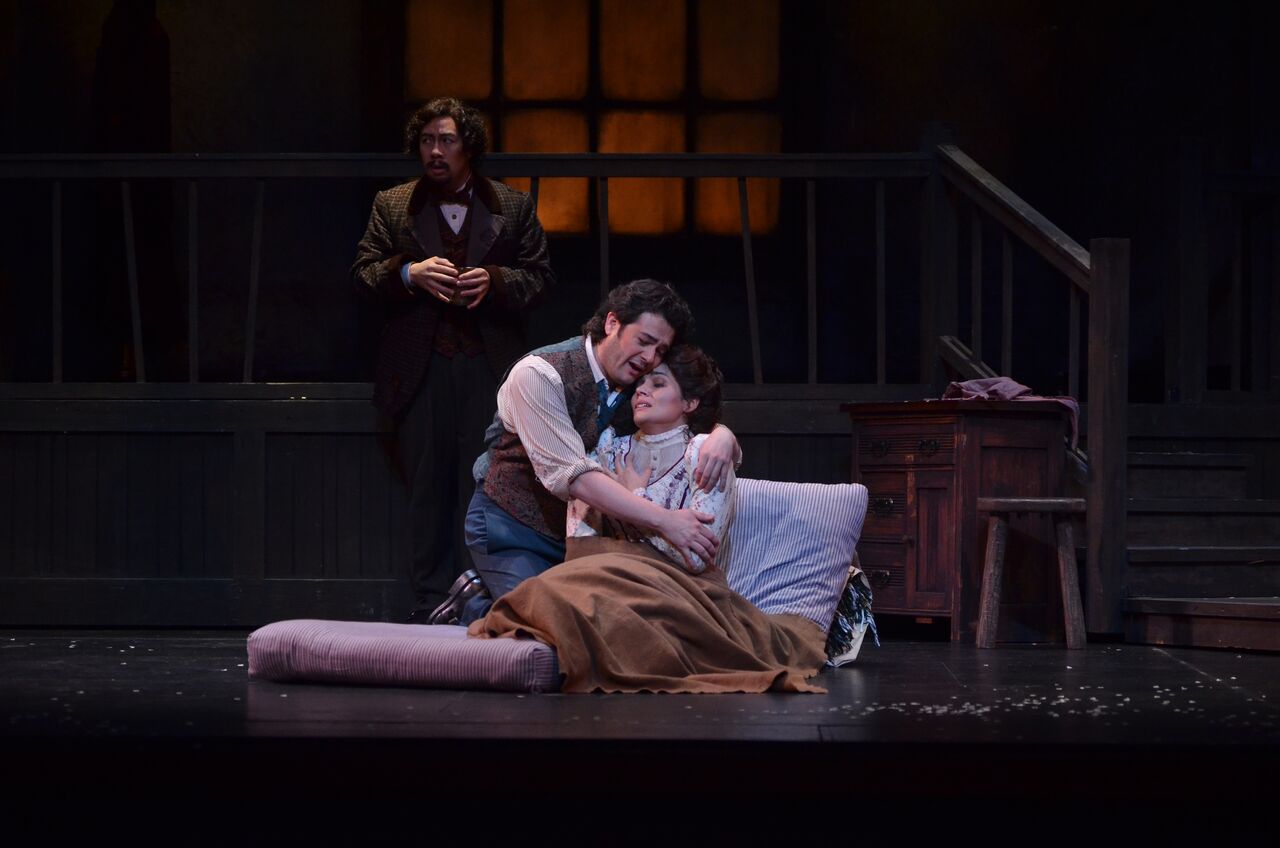
Review: Florida Grand Opera’s “La Boheme” at the Broward Center for the Performing Arts
in Featured Articles, Opera, Reviews
Giacomo Pucini‘s La Boheme is an opera without equal, and perhaps the quintessentially modern operatic oeuvre thanks to its timeless tropes of tragic love and artistic purity. Premiering in 1896 at the Teatro Regio in Turin, La Boheme is also the first production of the new 2018-2019 season for the Florida Grand Opera. The recent staging at the Broward Center for the Performing Arts (arguably the most opera-friendly venue in the South Florida circuit, including The Kravis Center in West Palm Beach and The Arsht Center in Miami) was a powerhouse depiction of the tension every artist faces: the relationship between artistic vision and financial success.
It is a fact often lost in current day discourse that the term “Bohemian” refers not only to the artistic lifestyle of living outside bourgeois and most social conventions, but also to a political radicality that questions normative economic and political structures.
It might be a bit of theoretical wishful thinking to say that La Boheme is a timeless story that hits close to home in our current American political crossroads. However, it would be apt to recall that the struggles of artists everywhere and in all genres are always (in some ways) a referendum on what a society values. Artists, the true, courageous sort, must always already push up against, and transcend, societal and aesthetic conventions if they are to do their calling justice. It is a bit of an irony that the Florida Grand Opera production of this Pucini classic is not ground-breaking, but it does not need to be, anymore than a pianist needs to radicalize a lovely Mozart piano concerto. The key to the success of such a staging is in the performance– and what glorious performances these are!
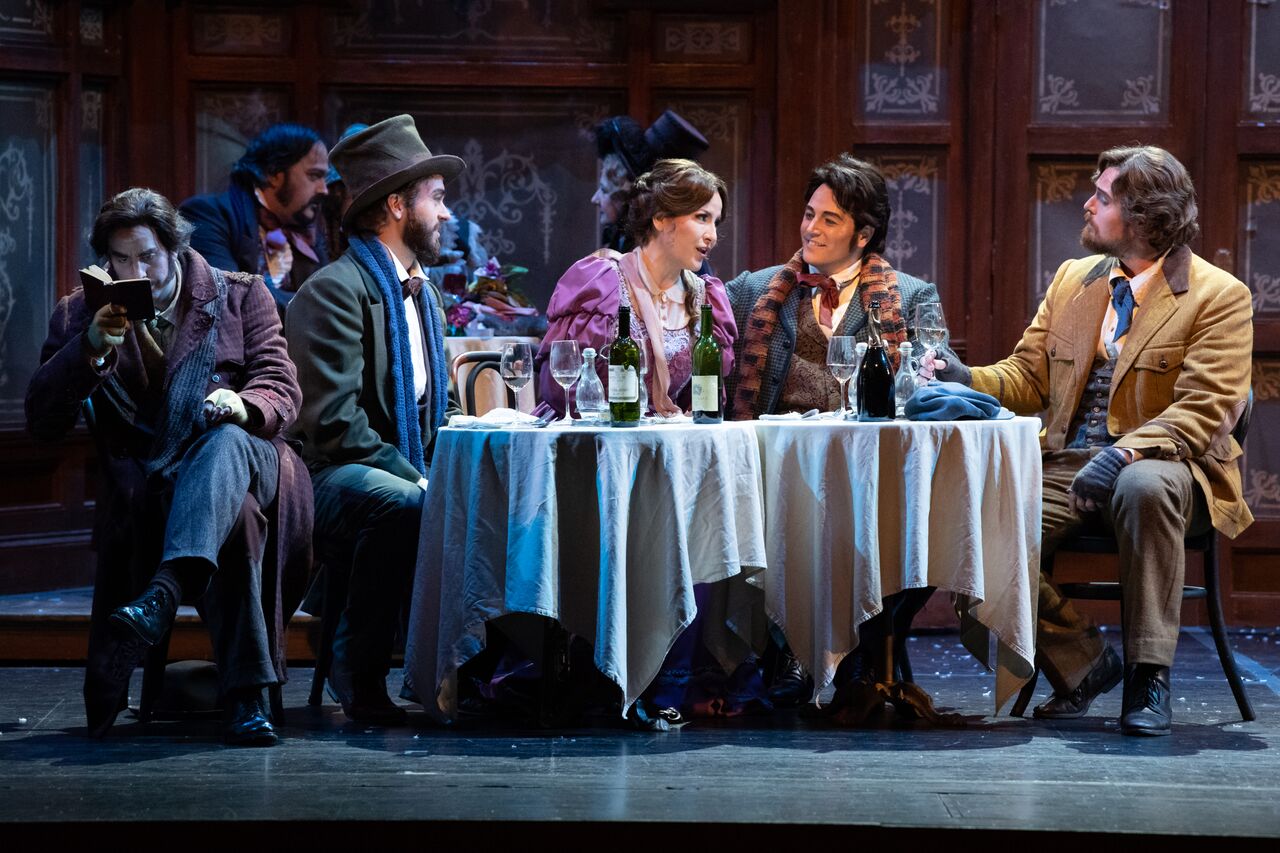
Photo by Chris Kako for the Florida Grand Opera, 2018
In the case of La Boheme, we have an Italian opera set in the Paris of 1836 that is the very origin of modernist cultural impulses as applied to painting and other art forms.
The travails of Mimi, the sickly seamstress and the love of Rodolfo, the opera’s male protagonist, are depicted with great tenderness by Adrienn Miksch and Alessandro Scotto di Luzio respectively. Trevor Schenemann’s Marcello is Rodolfo’s roommate and a painter who becomes Rodolfo’s soulful brother during their trying times in the dual chill of poverty and Parisian winter. Both artists are struggling to survive in the cold, damp confines of their Parisian garret as they attempt to create works of greatness. Both become entranced by the tender innocence of Mimi who enters with a candle that has just extinguished.
The scene is gorgeous and the set sublime. It is a moment of rapture and one that foretells loss, pain, and beauty.
The set design of this production, replete with exaggerated angles and delicate wisps of ambient light, makes for a haunting and melancholic depiction of Paris in the Winter that had me longing for a glass of Burgundy and a warm baguette. The Florida Grand Opera team art, director Jeffrey Marc Buchman, and set designer, Michael Yeargan, created a visceral and sculpturally theatric experience that added another dimension to the performance. More than just drama, tragedy, and music, this production became something beyond the expected with the graceful elegance of the cast and the willowy echoes of their singing. The attentive audience was rapt. I couldn’t get enough.
The Florida Grand Opera is now celebrating its 78th season in style with three more productions: The Marriage of Figaro, Frida and Werther. What this company has demonstrated with consistent verve is a demanding stroke of precision and excellence that merits the full attention and ardor of its South Florida populace. Opera companies like these are not found in every city. Executive Director and CEO Susan T. Danis deserves to take a bow for spearheading this magnificent production of Pucini’s classic.
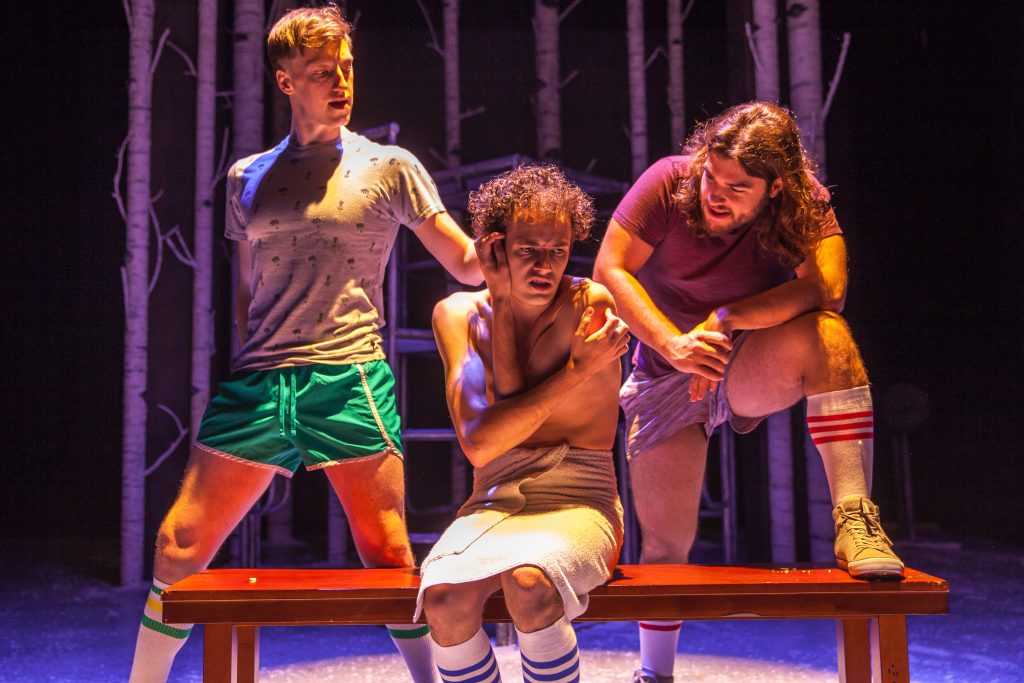
Review: “Let the Right One In” at the Hippodrome Theatre, Gainesville
Photo by Rachel Jones for The Hippodrome Theatre
Plays based on novels that have already been adapted for the big screen represent a challenge to the audience. The challenge is to counter the influence of both cinema and literature, and to experience the theatrical production of a work from a fresh perspective, despite the visual cues and literary devices already present in the public consciousness. Adaptations of films and books can be stumbling blocks as much as opportunities for both director and playwright.
The Hippodrome Theatre‘s production of “Let the Right One In” provides its audience with a coda to these challenges: experience the visceral performances on stage at face value. For this reviewer who has not seen the film directed by Thomas Alfredsson and has not yet read the book, “Let the Right One In” served as a memorably sweet encounter combining horrific violence with the melancholic transgressions of youth.
Written by Jack Thorne and directed by Lauren Warhol Caldwell, the Hippodrome Theatre’s production did much to lure the audiences into a fresh and innately focused viewing experience that left little doubt as to the immediacy of strong theatrical stagecraft.
The Hippodrome produced a powerful testament to drama and story-telling within the intimate confines of a three dimensional presence that is quite simply impossible to achieve through reading a book.
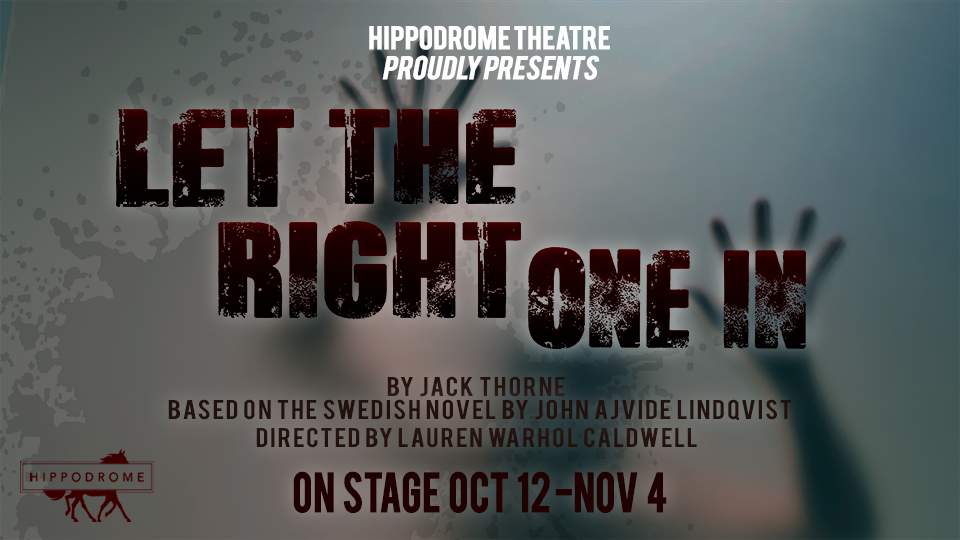
The play succeeded not necessarily due to any special attention to set design or lighting, however. What kept me and the other audience members intrigued, beguiled and in a state of despairing suspense was the lovely chemistry between Marissa Toogood’s vampire, Eli, and Ben Tracy’s Oskar.
The evolution of their innocent romance vulnerable to exterior forces beyond their control could have been a parallel version of Romeo and Juliet or any other story of forbidden love…only with the twist of eternal life and the thirst for blood thrown in.
Mr. Tracy’s ability to morph into a young adolescent and assume contorted body positions reflecting distorted emotions was especially effective particularly during an epic scene in which he is being drowned in a violent act of retribution. His slow motion renderings of panic and the onset of passing into the netherworld while hanging from monkey bars on a playground represented the night’s dramatic apex. Tracy’s relationship with Ms. Toogood’s vampire character was especially intricate within the physicality of each character’s evolution. His ability to suffer physically and yet remain somewhat innocently aloof made for exacting drama with just the right hint of cinnamon-flavored wistful comic relief.
Between Ms. Toogood’s ability to twist, jump and lurch and her vocally resplendent dialogue, I, for one, wanted this production to continue into a Netflix television series.
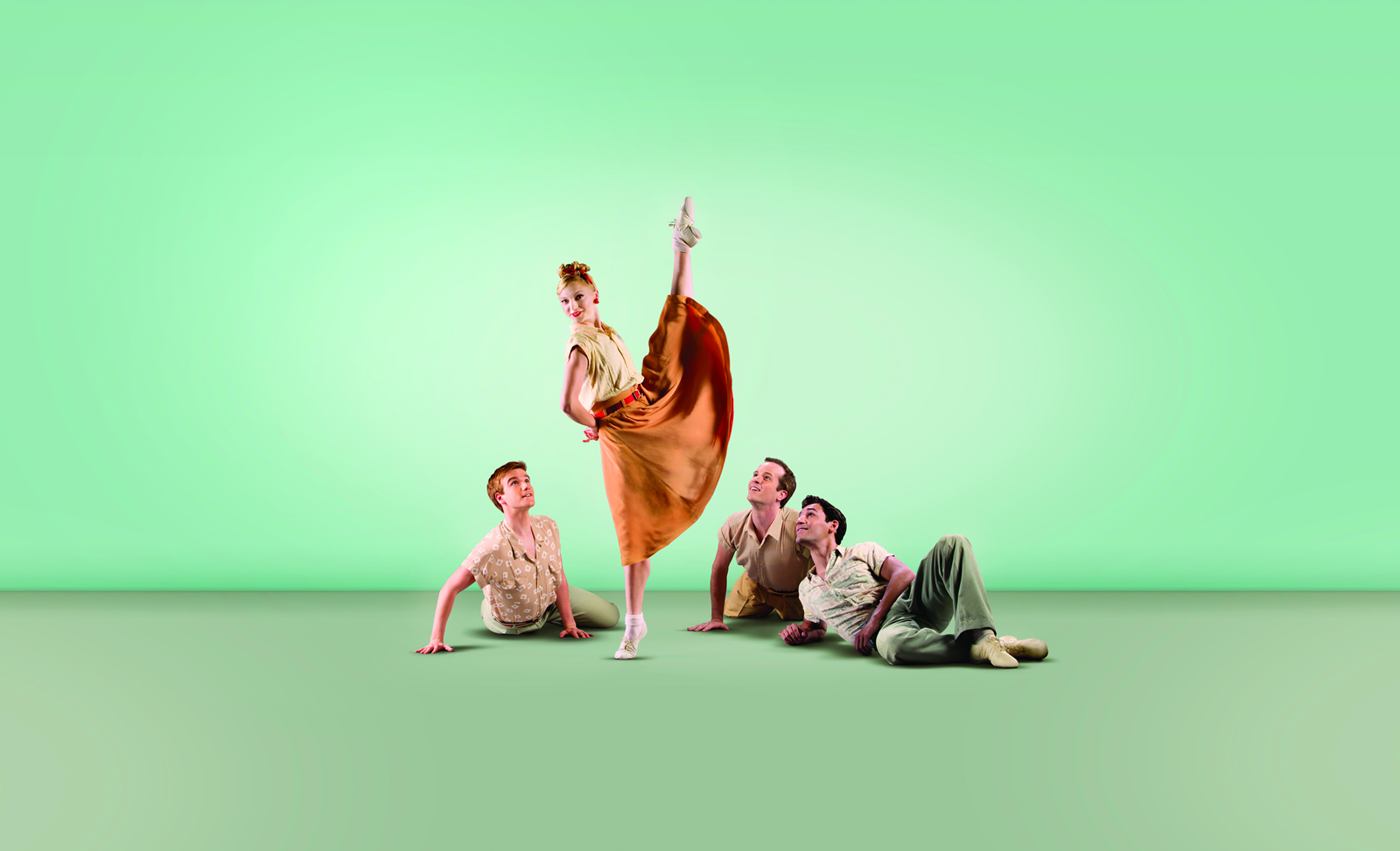
Review: Miami City Ballet’s “Company B” at the Broward Center for the Performing Arts
Photo Credits: Ellen Grocki and Miami City Ballet dancers in Company B. Photo © Alexander Iziliaev.
“Company B” is the title of the first program in the Miami City Ballet’s new 2018-2019 season and what a first program it is! Taken from the famous Andrews Sisters song “Boogie Woogie Bugle Boy” of 1959, Company B, choreographed by Paul Taylor, is also the second performance in the three-dance evening’s delightful presentation of classical pieces by Georges Balanchine (Concerto Barocco and Piano Conecerto No. 2).
To call the Miami City Ballet a seasoned dance company implies that it is also a bit more subdued and reserved, like a man in his 50s embracing middle age and shedding his wayward ventures of playboy-esque lifestyle. This is not the case.
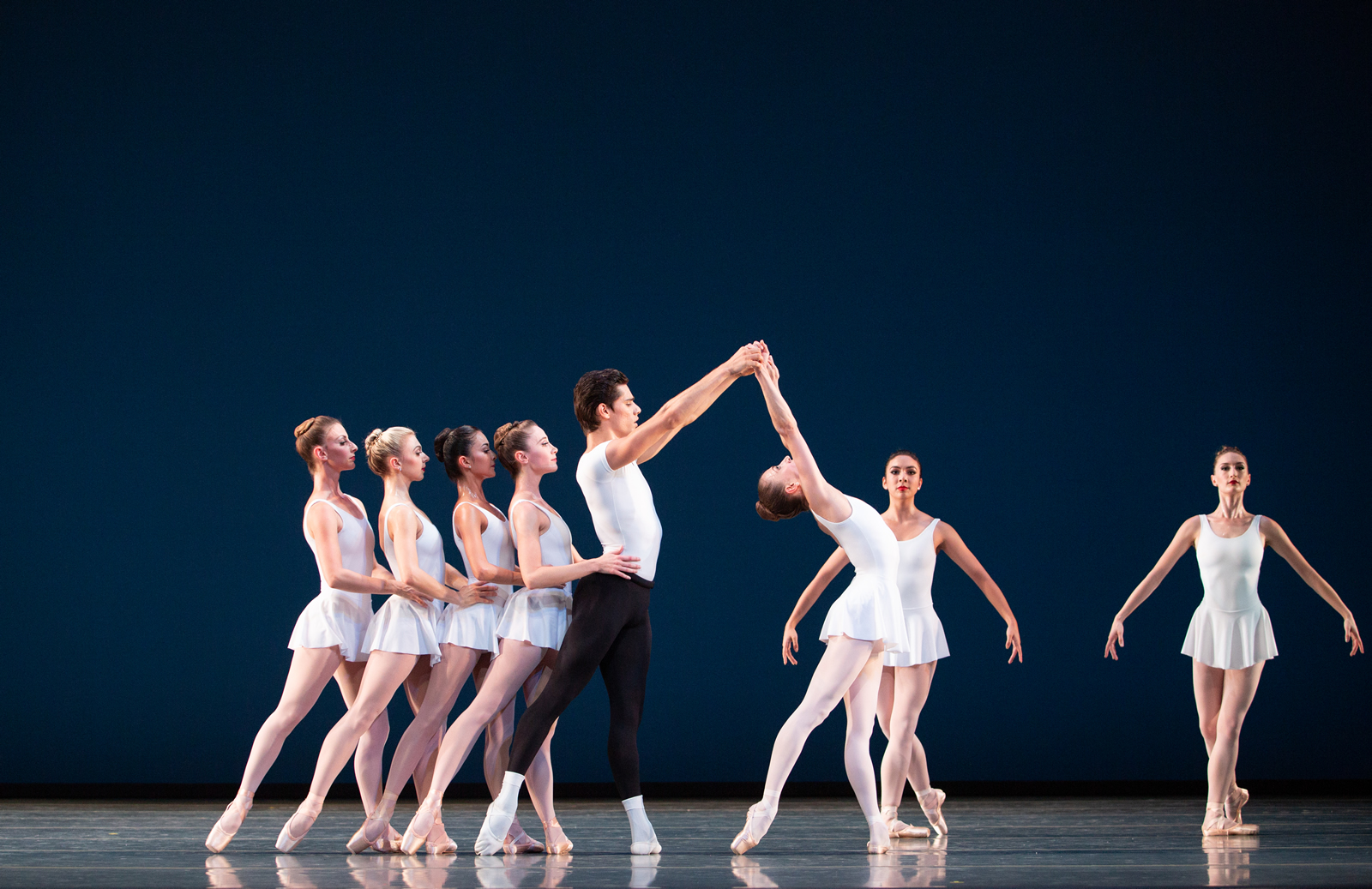
Simone Messmer, Jovani Furlan and Miami City Ballet dancers in Concerto Barocco.Choreography by George Balanchine © The George Balanchine Trust. Photo © Alexander Iziliaev.
The Miami City Ballet is a unique presence of skill and enlightenment in the South Florida cultural scene thanks to his ambitious programming, its scintillating productions, and of course, it’s mesmerizing dancers. Accompanied by their loving and dedicated orchestra, the evening’s performance at the Broward Center for the Arts was a sensational beginning to the Fall cultural season.
With an almost-full house, the Concerto Barocco began the evening’s entrancing work with savoire faire and elegant longing. Balanchine’s Concerto Barocco is considered by many devotees and critics to be the master choreographer’s signature work. In as much as this piece combines the grace of classical ballet with the early musings of modern whimsy, the assertion is correct, if a little banal. What makes the 1941 work so compelling is the sly sensuality and its presence a discrete, minimally-lit stage with no props. The accompanying music by Johan Sebastian Bach, the Great German Baroque composer, adds to the sublime elegance of the performance.
Simone Messmer and Jovani Furlan made for a poignant pairing that enraptured the audience from their first three confident steps. Accompanied by a group of female dancers, Concerto Barocco made for an exacting and breathy opener to the evening.
Without a doubt the most accessible and perhaps entertaining composition, “Company B.” The performance premiered by the Miami City Ballet in 1995 and includes songs from the 1940s and ’50s sung by The ever-delightful Andrews Sisters. The female harmonies and innocent declarations of longing and everlasting love evoked a slyly and soft sinister feeling of coy and ironic sympathies among many of the performer, who graced the audience with not-so-subtle smirks, hand waves, and knowing glances, as if to say: “We know the music is corny but it doesn’t make it any less sweet.”
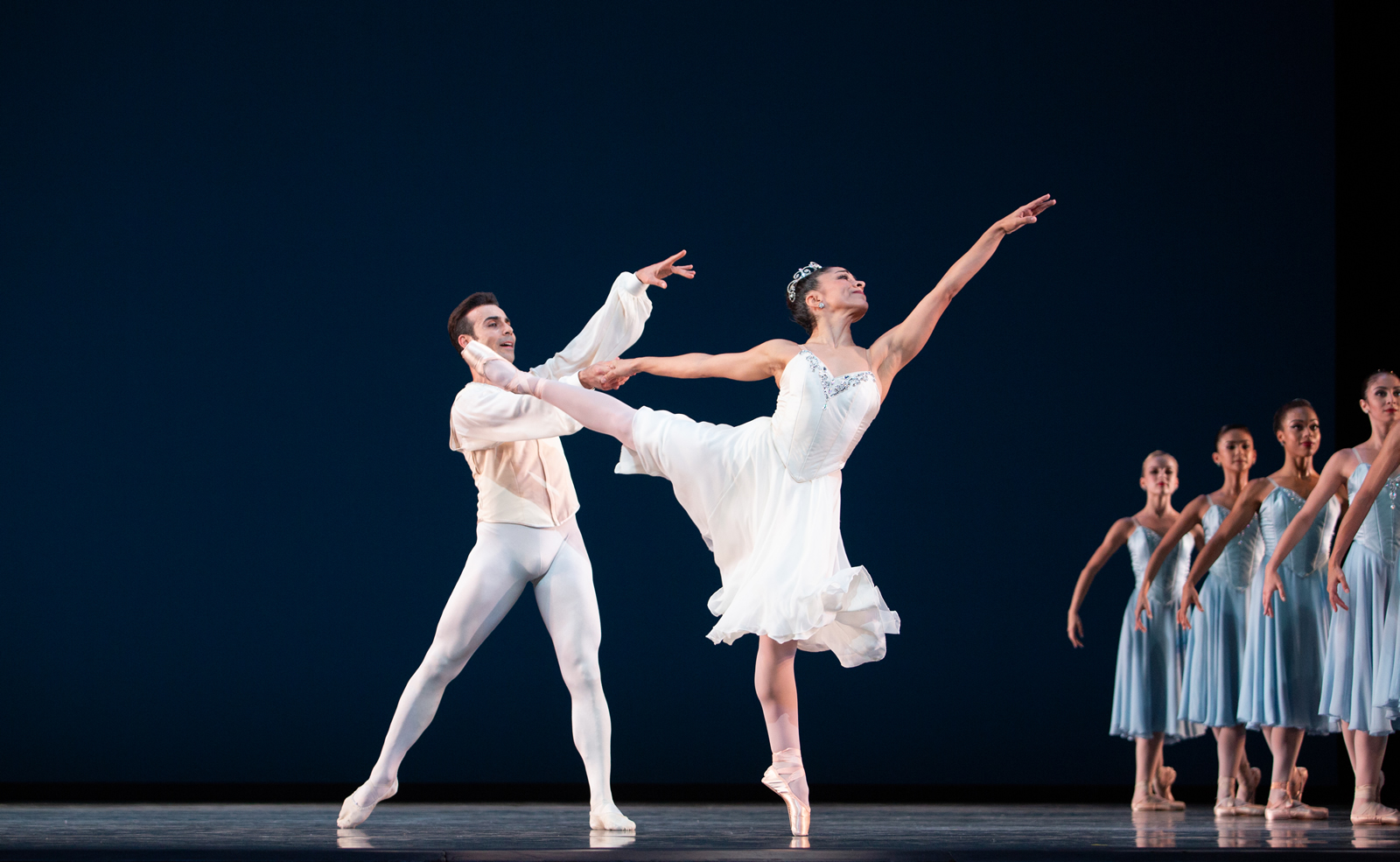
Jeanette Delgado and Renato Penteado in Tchaikovsky Piano Concerto No. 2.Choreography by George Balanchine © The George Balanchine Trust. Photo © Alexander Iziliaev.
It is interesting that the Miami City Ballet chose Tchaikovsky’s Piano Concerto No. 2 for its finale. The Balanchine-choreographed work demonstrates the physical prowess and graceful stamina of Renato Penteado and Jeannette Delgado in particular. A large ensemble case makes for an exquisite counter-balance to the various loveplay-inspired movements of the leading dancers.
The Miami City Ballet has once again begun a new season with verve, confidence, and a hint of playfulness. It is no wonder they are among the most respected and critically-adored of ballet companies in the nation.
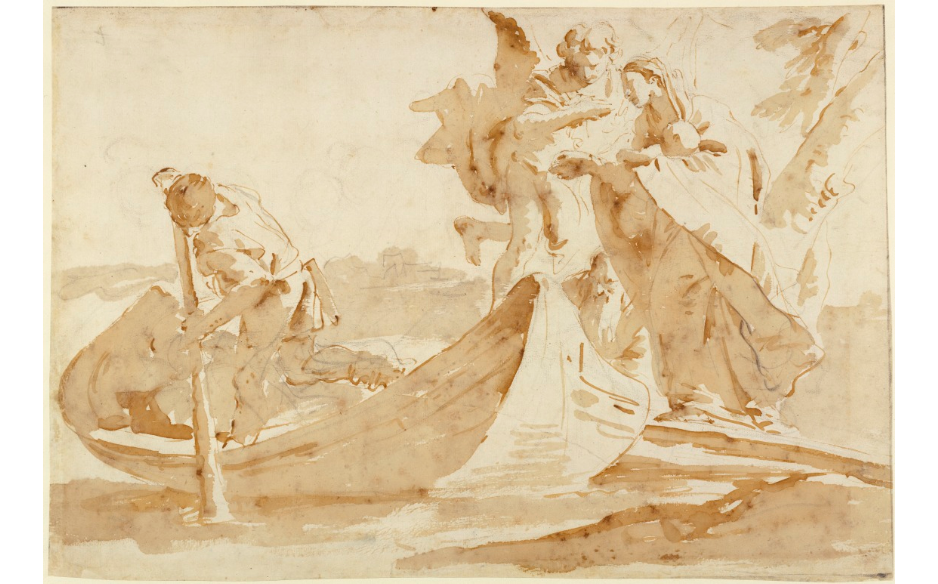
Review: The Flight into Egypt at The Getty Museum, Los Angeles
in Art, Featured Articles, Reviews
The Flight into Egypt is one of the central epic stories of the New Testament. It tells the saga of Joseph, Mary and Jesus fleeing King Herod and seeking sanctuary in Egypt after being warned by an angel of an account in the Gospel of Matthew. To celebrate the recent acquisition of Giovanni Domenico Tiepolo’s The Punchinello Riding a Camel at the Head of a Caravan, a stunning work on paper, the Getty Museum in Los Angeles is staging a special exhibition of three works related to this story.
Tiepolo was a Venetian artist born in 1727, whose legacy is among the most exquisite in 18th century European painting. The son of Giovanni Battista Tiepolo, a figure whose place in the Pantheon of art is secure, Giovanni Domenico is an artist revered equally for his printmaking and drawing skills as much as for his painting.
The Getty Museum’s acquisition of these two works on paper is consistent with the mission and passion of the institution’s founder, J. Paul Getty. Mr. Getty, once the world’s richest human being according to many sources, began his collection with European paintings and decorative objects from the 16th, 17th, and 18th centuries. Since then, the Getty Museum, along with the Getty Institute and the Getty Foundation, has become among the most important and relevant cultural centers in North America.
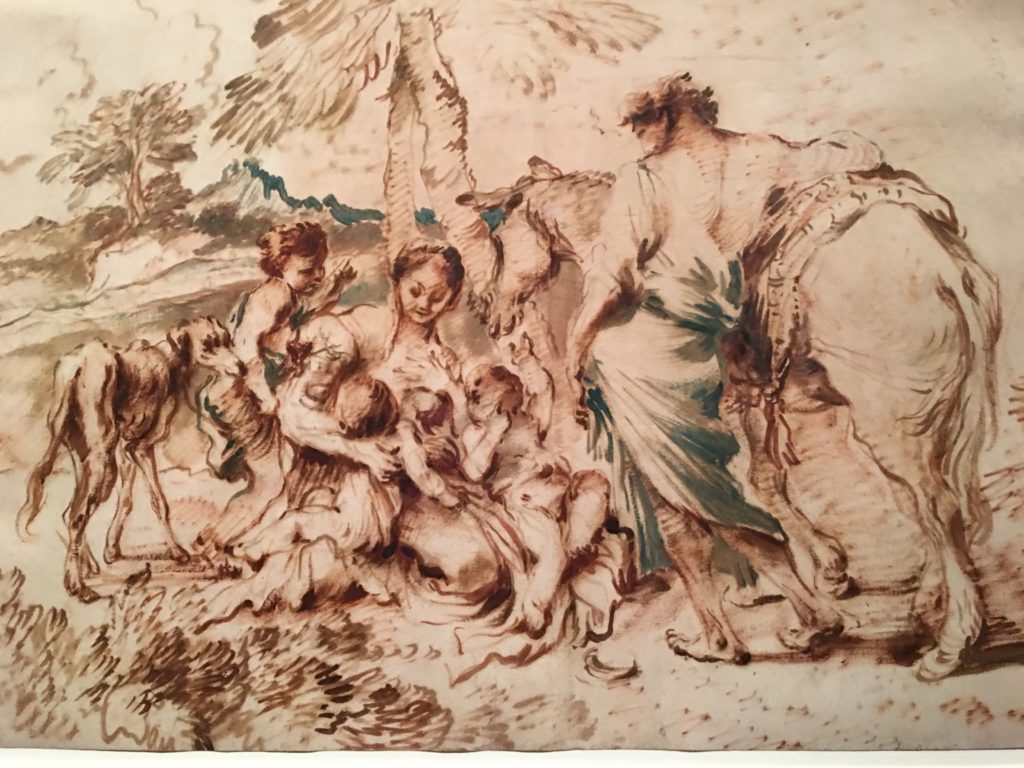
Giovannni Benedetto Castilgione, A Family in a Desert Landscape, chalk and oil paint on paper, late 1640s, The J. Paul Getty Museum.
With two works by Tiepolo and one by Giovanni Benedetto Castiligone, the exhibition invites contemplative grace and focus. Located in a small, aubergine-colored gallery with very dim lighting, the show represents a lovely respite from the flux of tourists and the crowds gawking at Van Gogh’s Irises and other more popular works of art that have defined the Getty in the public imagination.
Castiglione’s A Family in a Desert Landscape depicts the holy family seeing repose under a fig tree. A work of bold and jarring valuation, the drawing-painting captures the sinewy forms with curvilinear swiftness that defines much of the Italian’s work. The somber yet loving scene could be any family, even today’s migrants fleeing war and famine in places like Syria, Yemen or Afghanistan, such is its humanity.
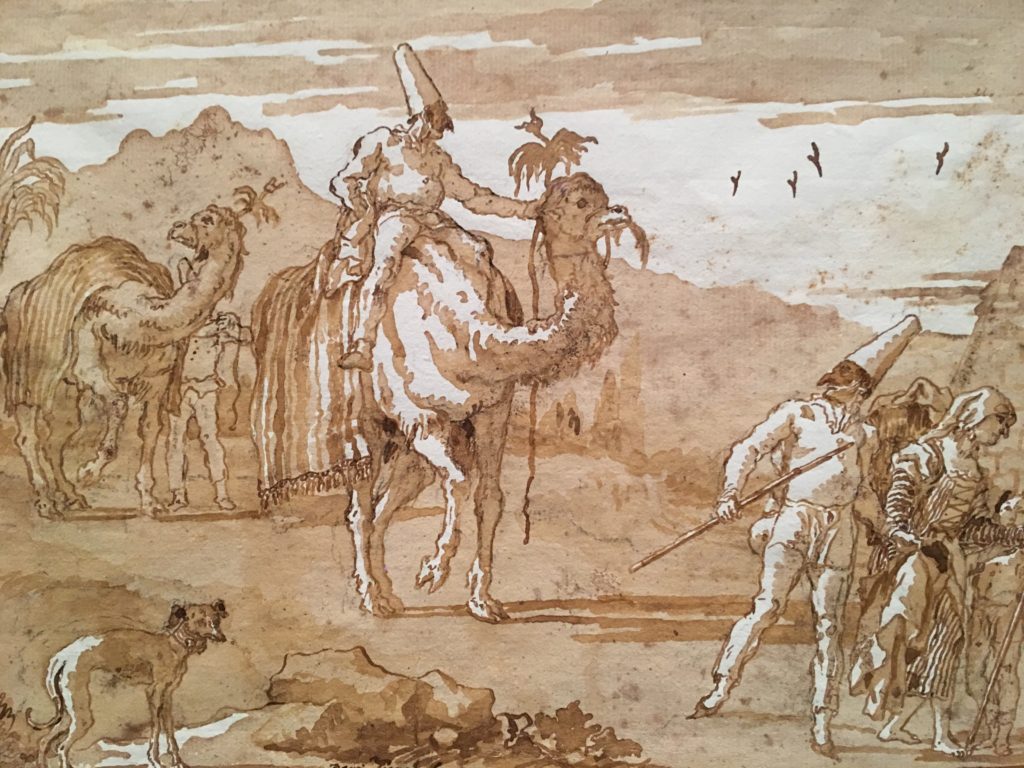
Tiepolo, The Punchinello Riding a Camel at the Head of a Caravan, late 1790s, brush and brown ink over black chalk, The J. Paul Getty Museum.
Tiepolog’s Punchinello Riding a Camel is rendered with such exacting solemnity and will that it appears almost mechanical, like an engraving or mass-produced print. That it is a unique work on paper executed by the artist’s hand is only part of its exquisiteness. The passion of the travelers and the values of shadows and sun make for a haunting depiction of a foundational tale.
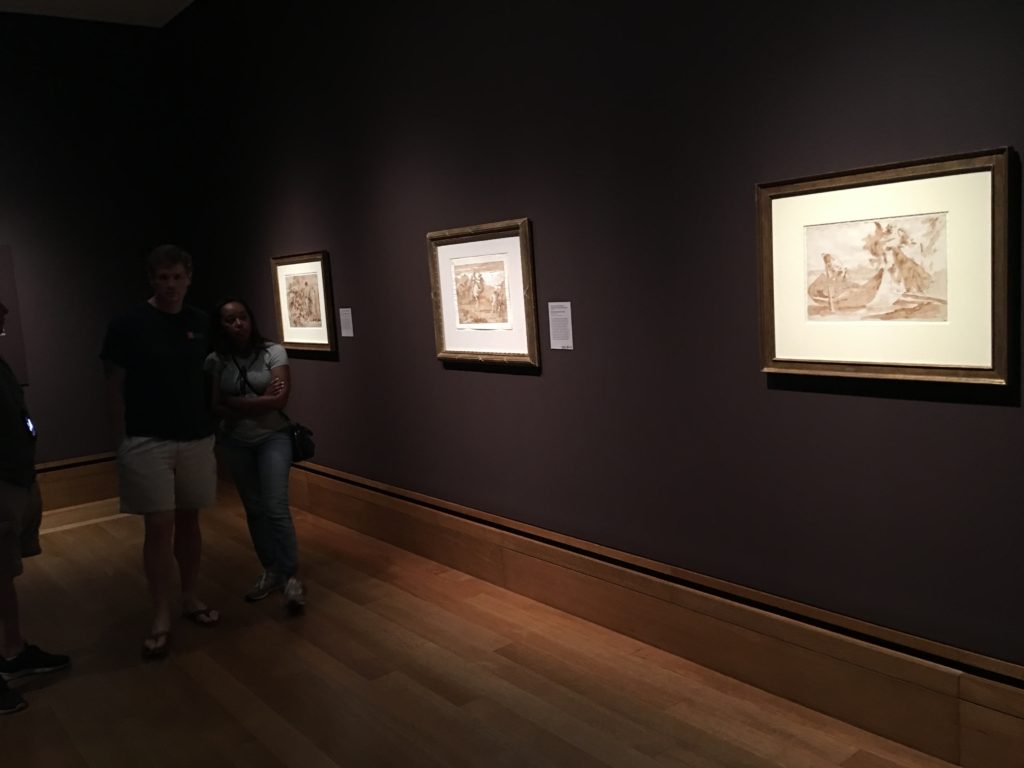
Installation View of “The Flight into Egypt” at The Getty Museum
What makes “The Flight Into Egypt” an experience of repose and illumination is not only the sensational quality of the three works, but also the delicacy and ardor with which they are presented, particularly within the context of the Getty Museum’s larger and more expansive galleries just beyond the space in which one may find calm and contemplation.
With “The Flight Into Egypt,” the Getty Museum has once again delivered on the sacred promise of its founder and provided an educational, inspiring look into both a classic Biblical tale, and its influence on two great artists.